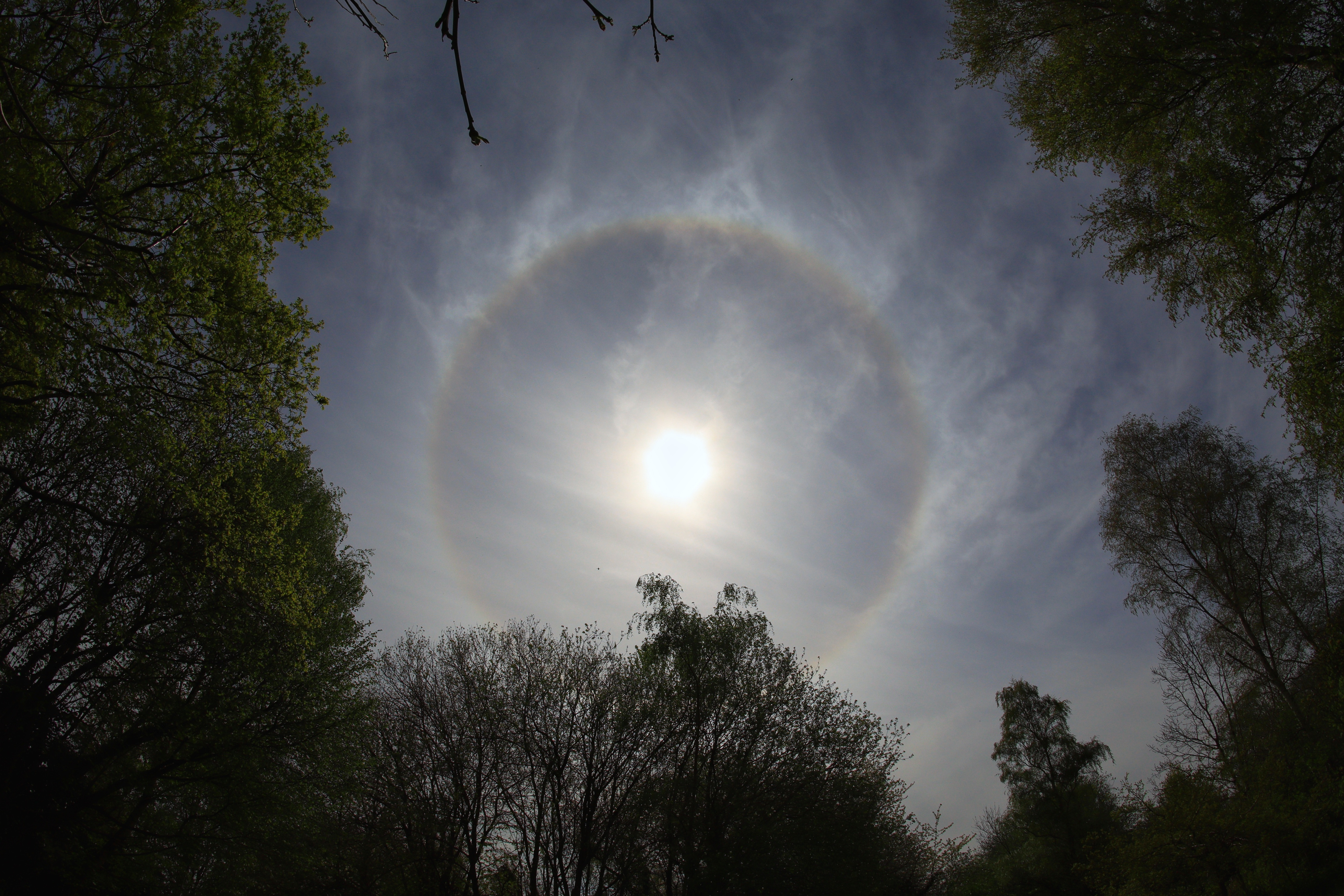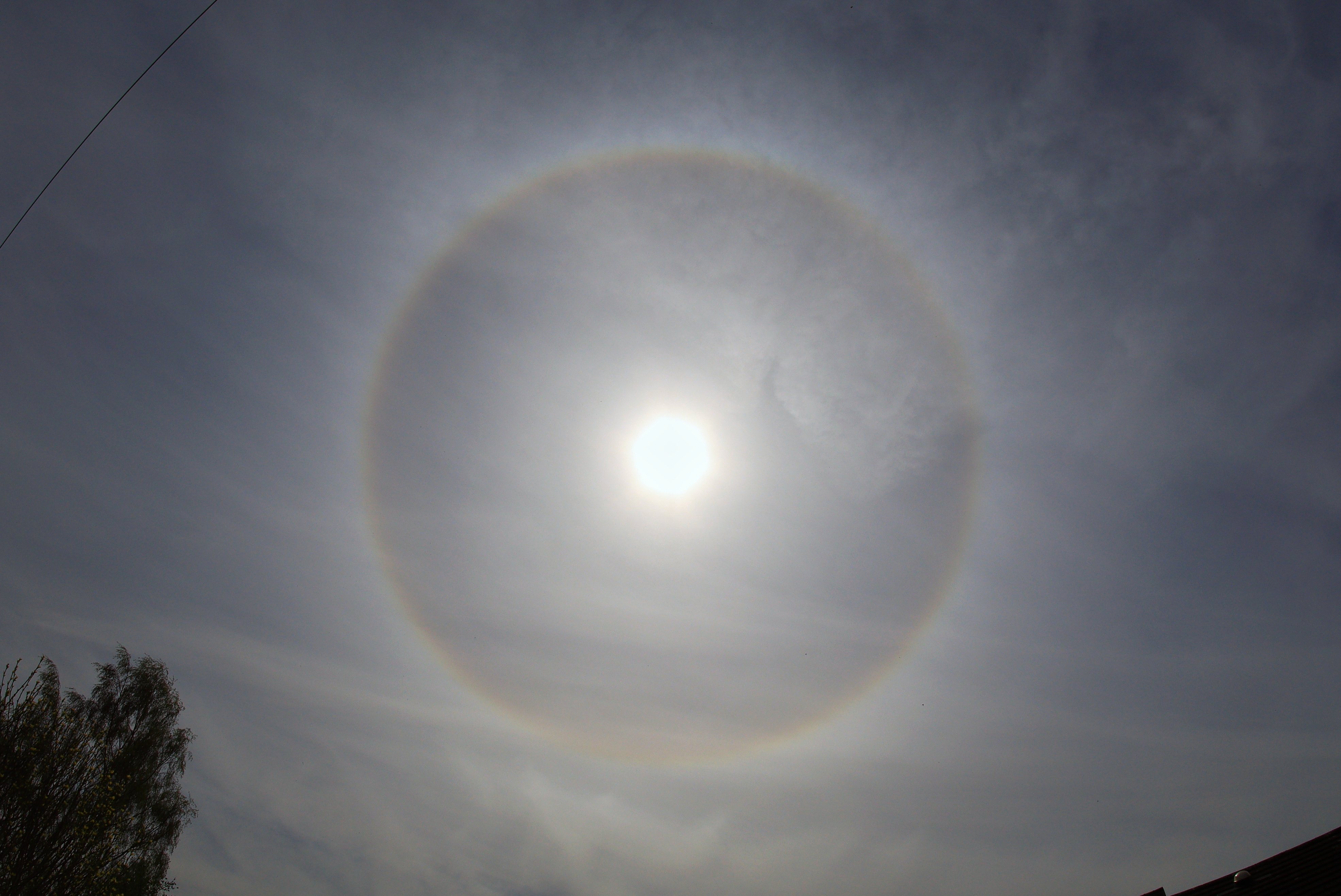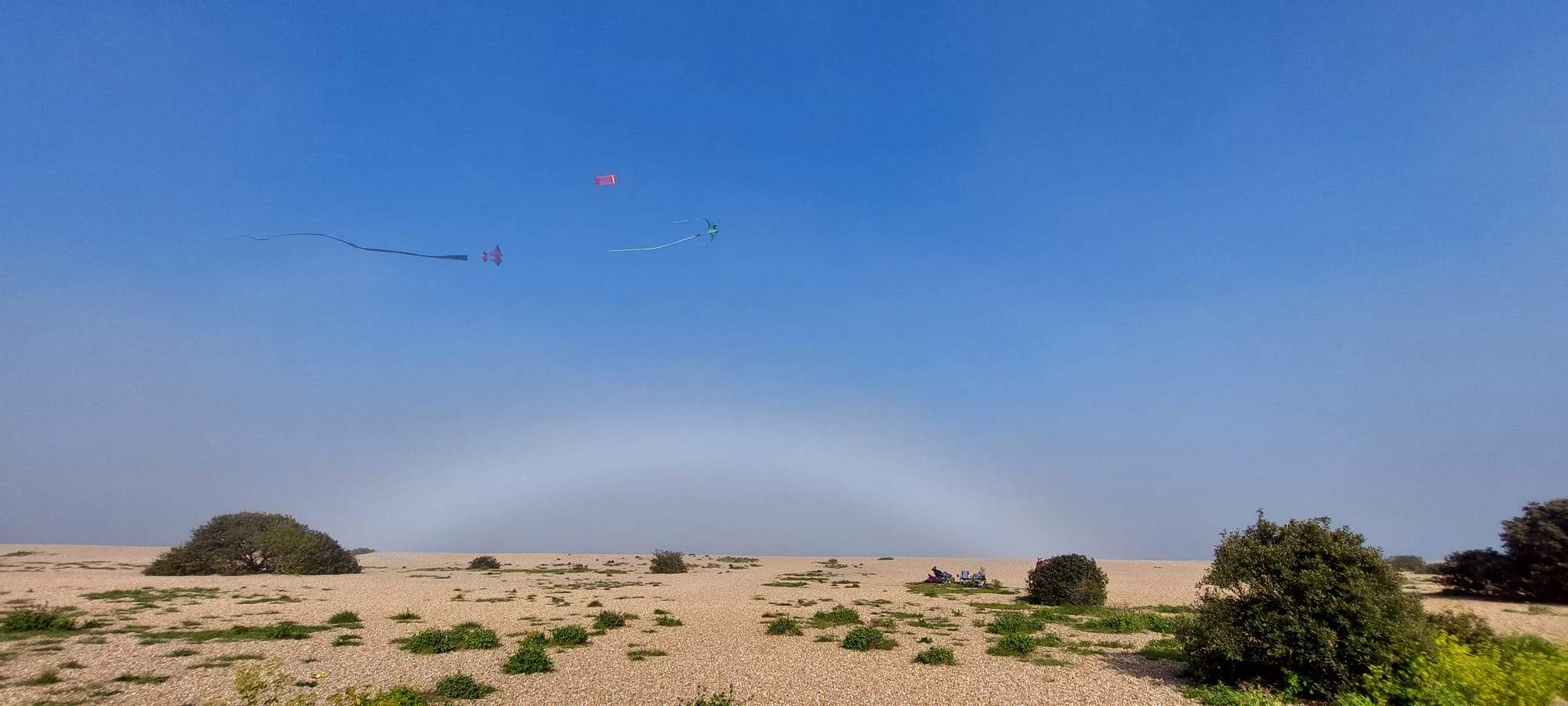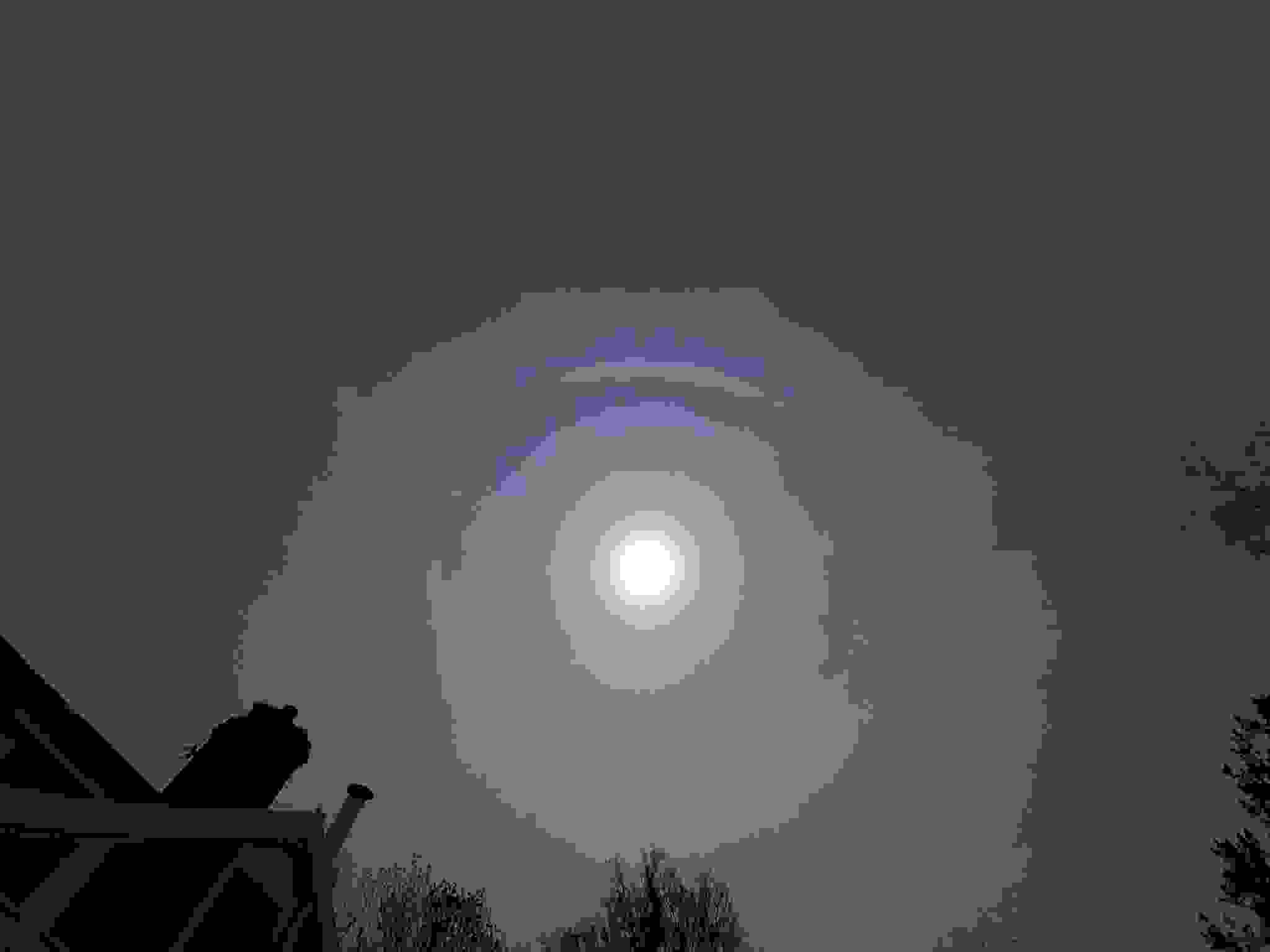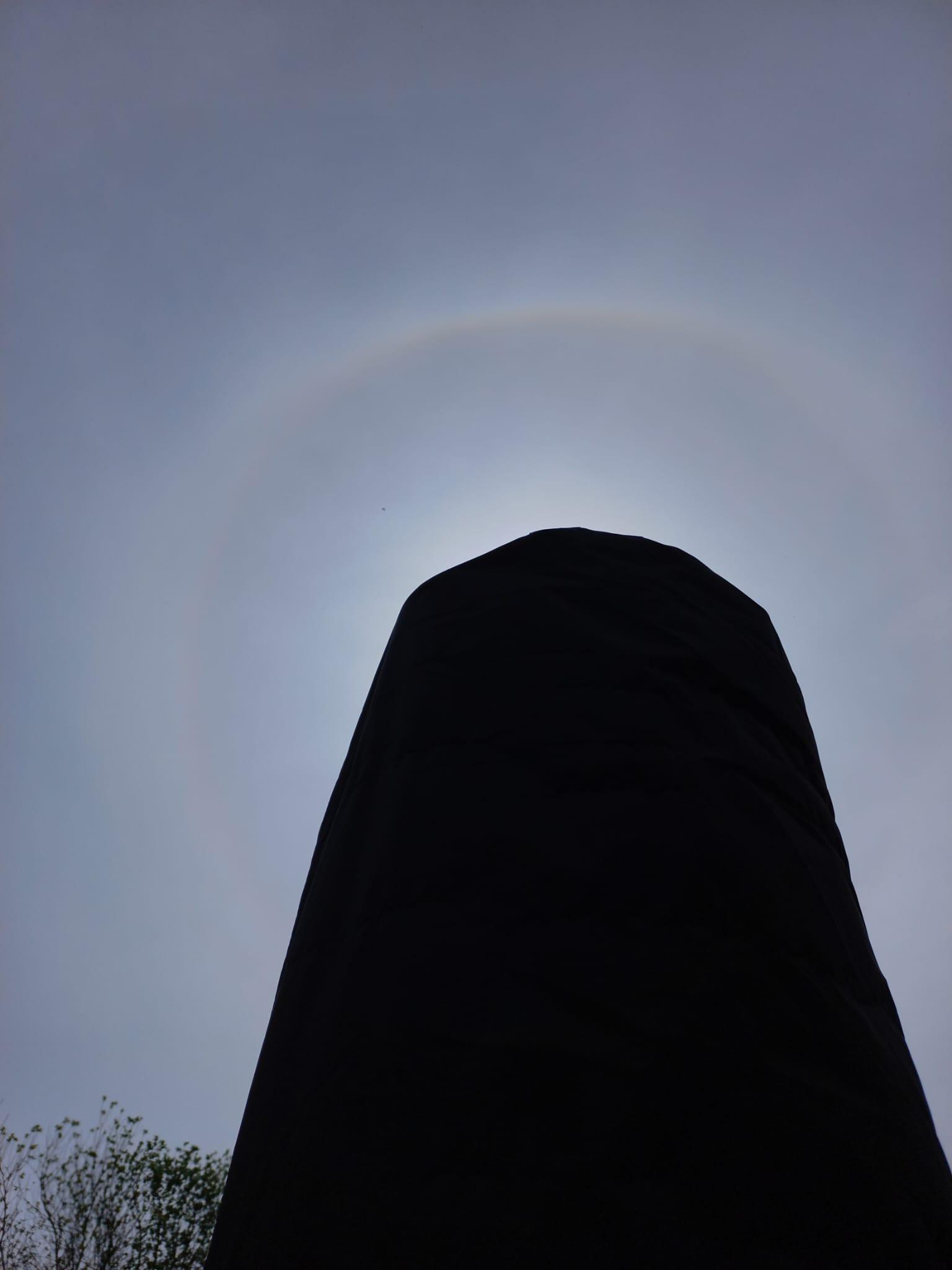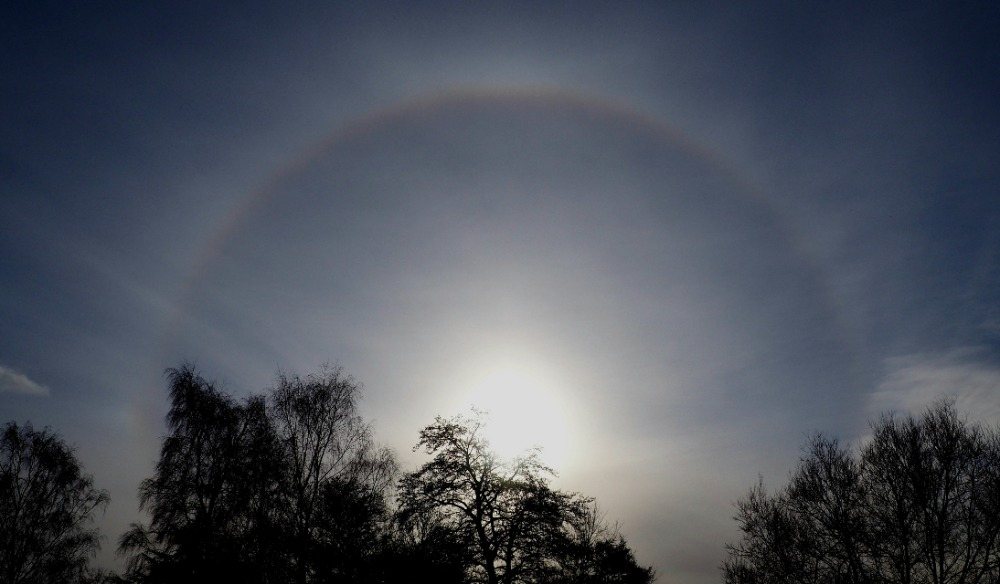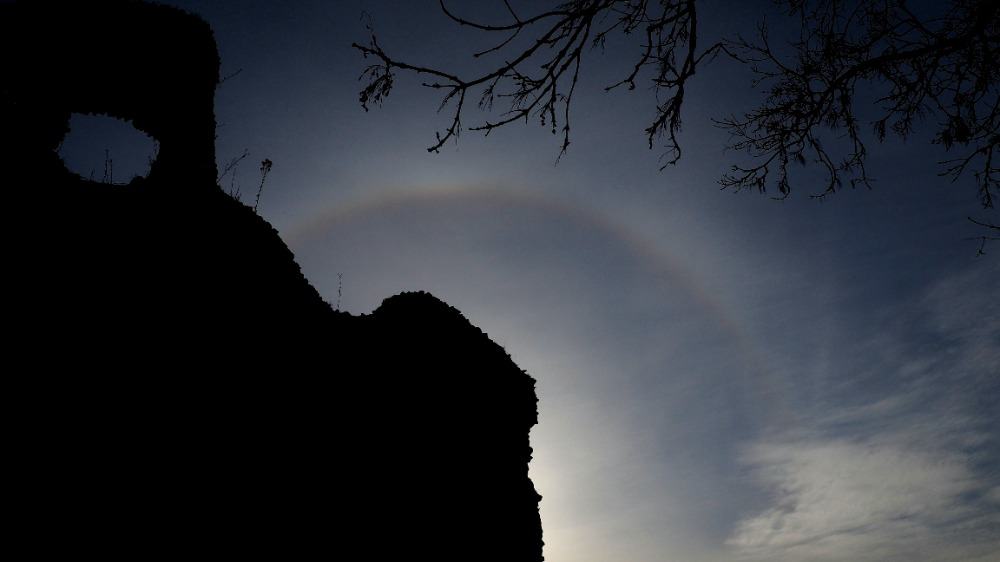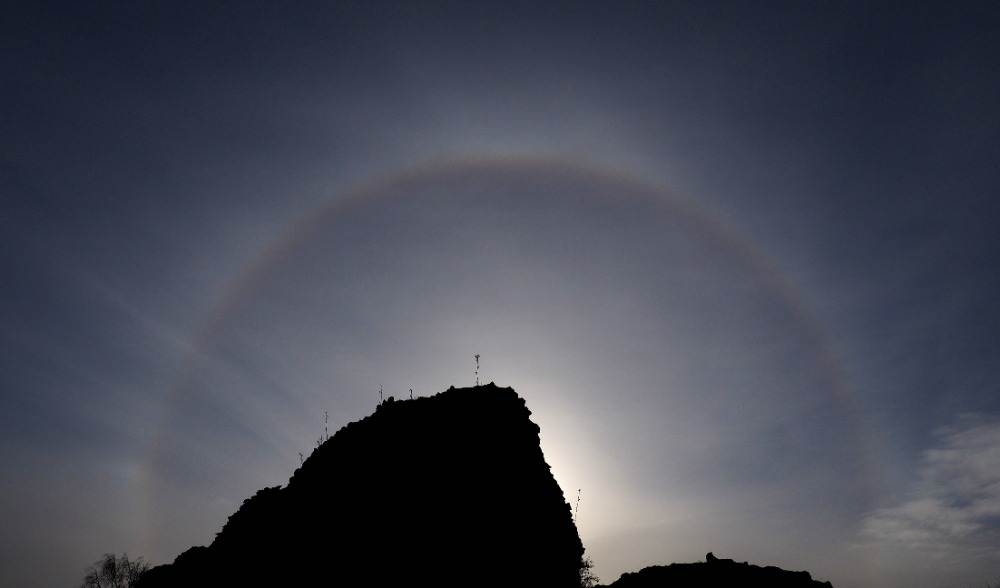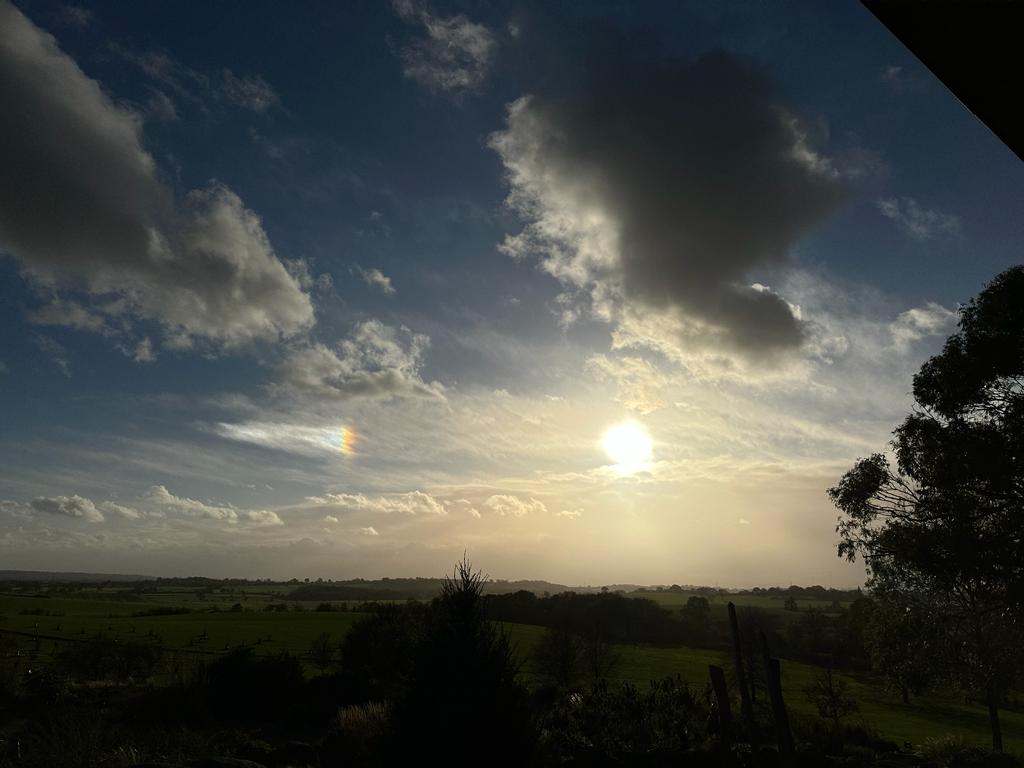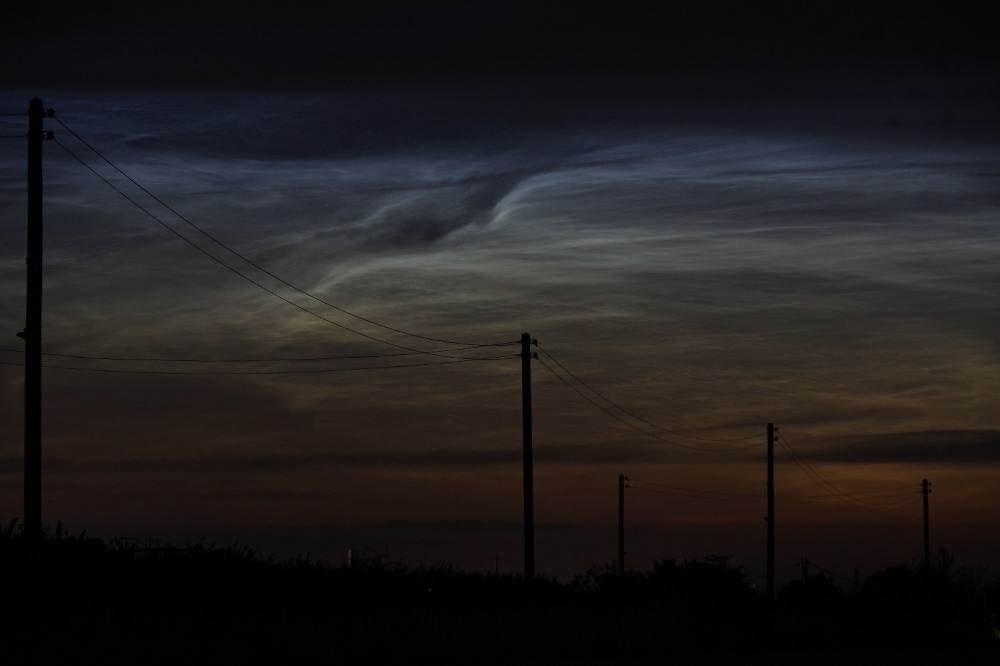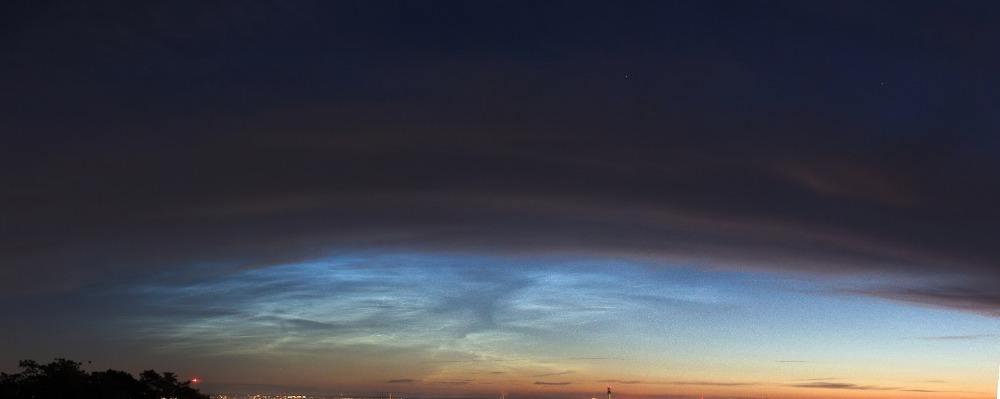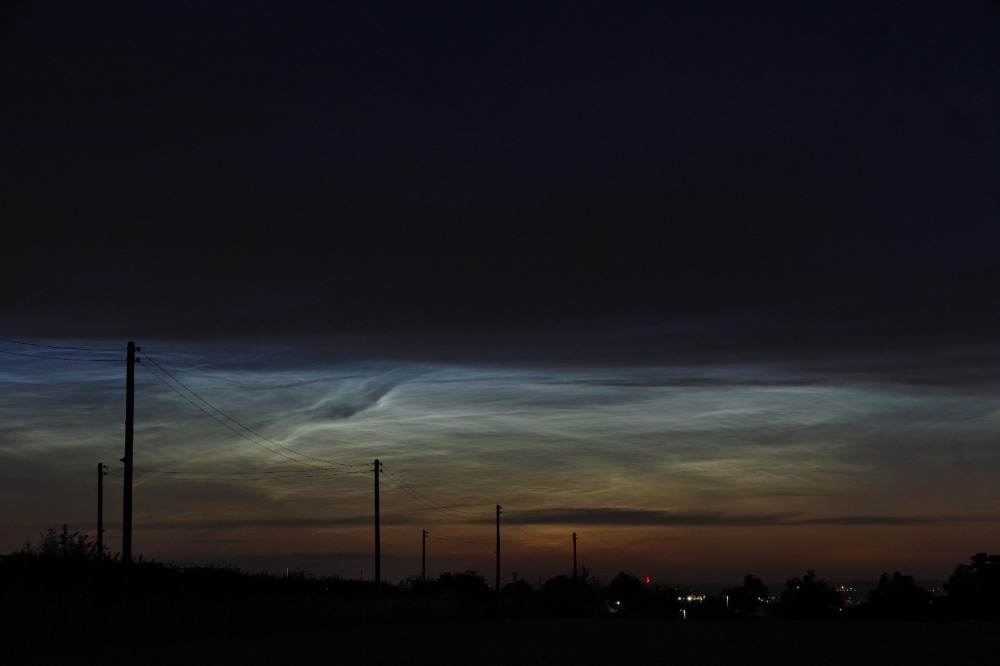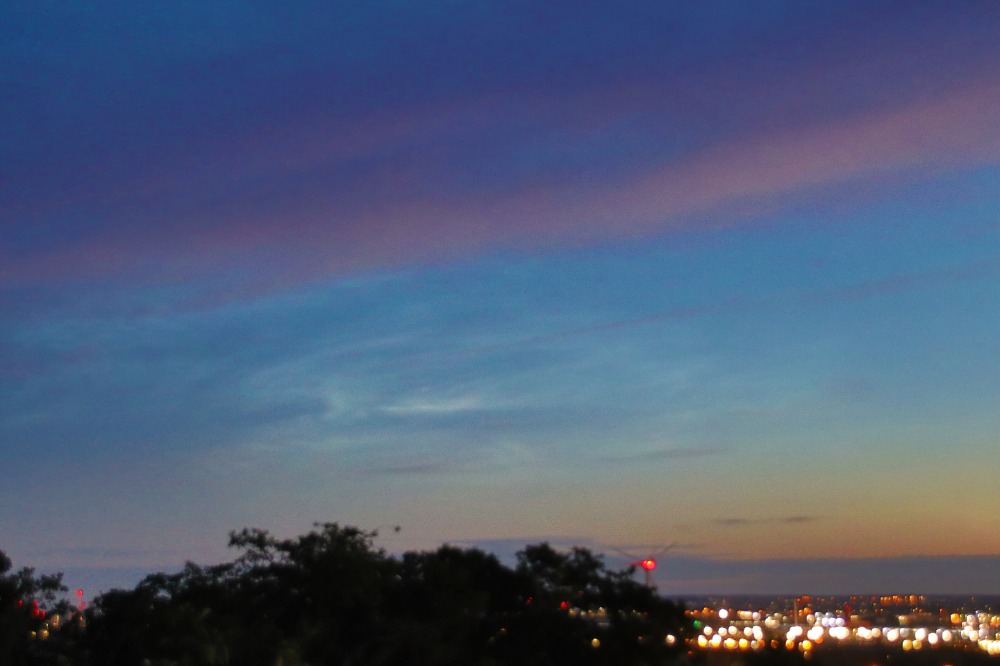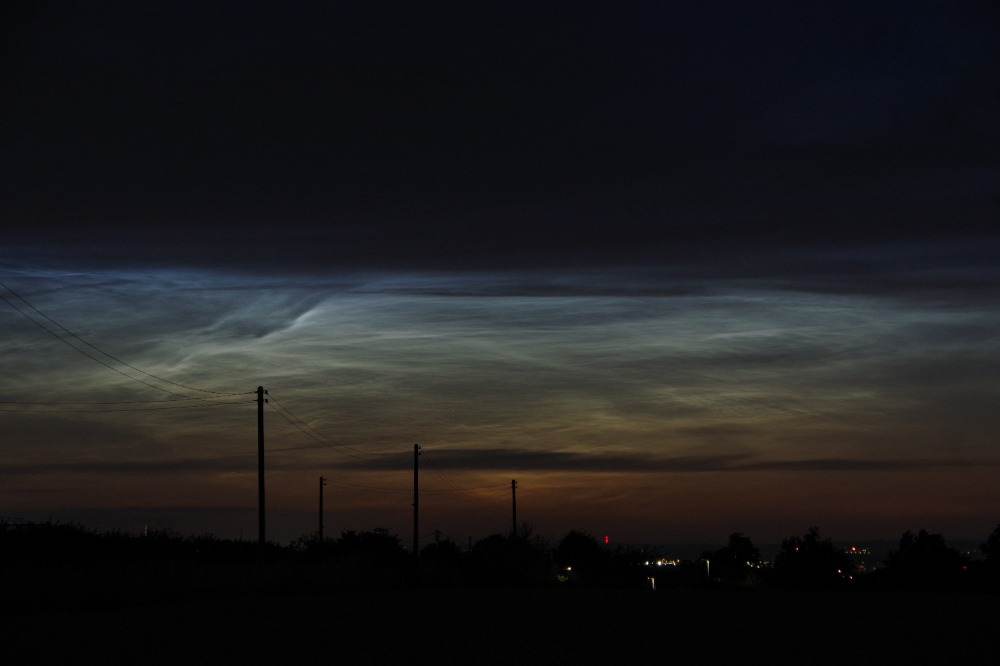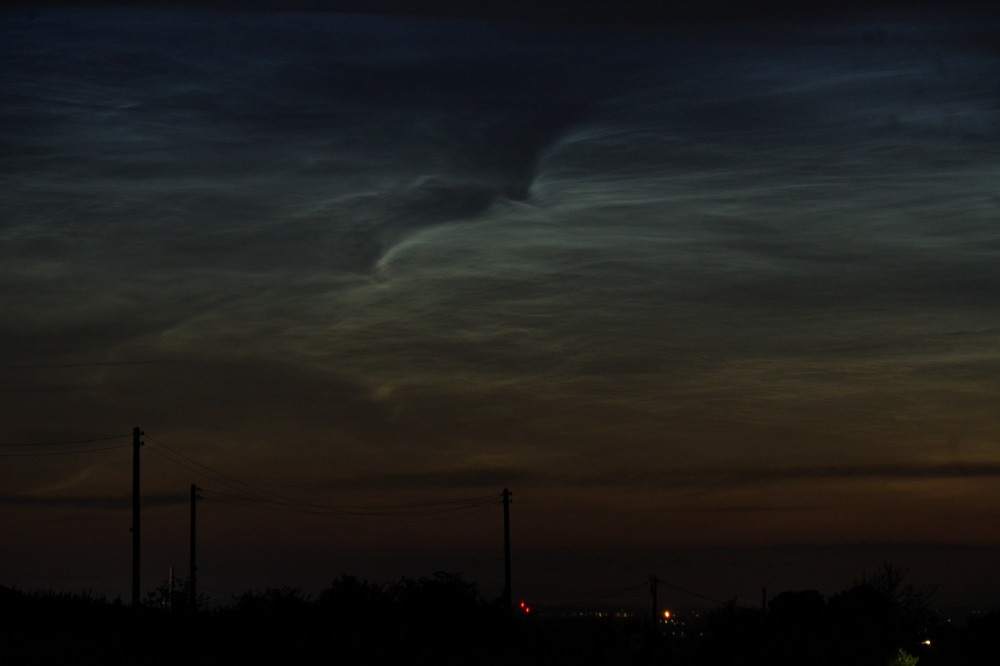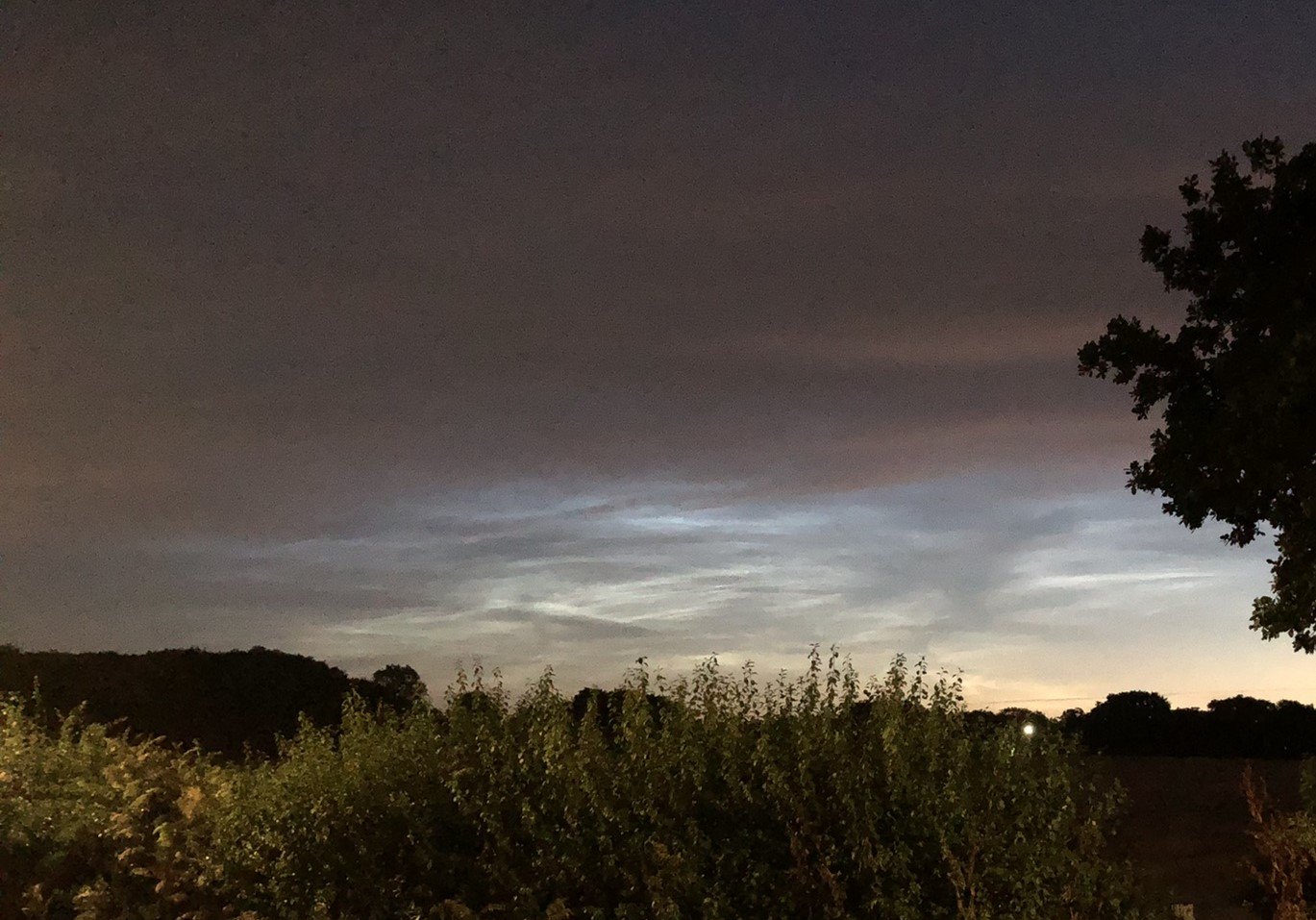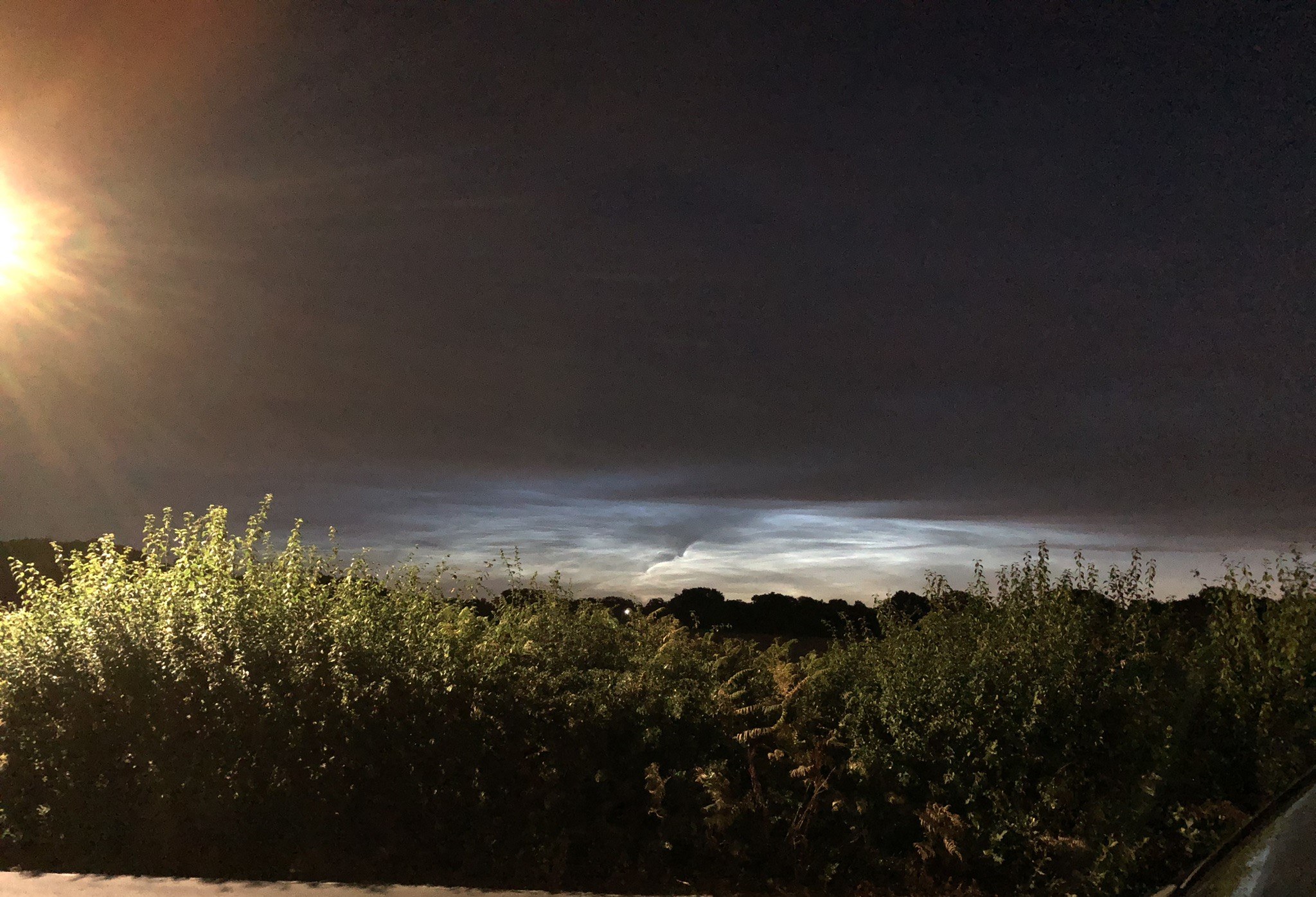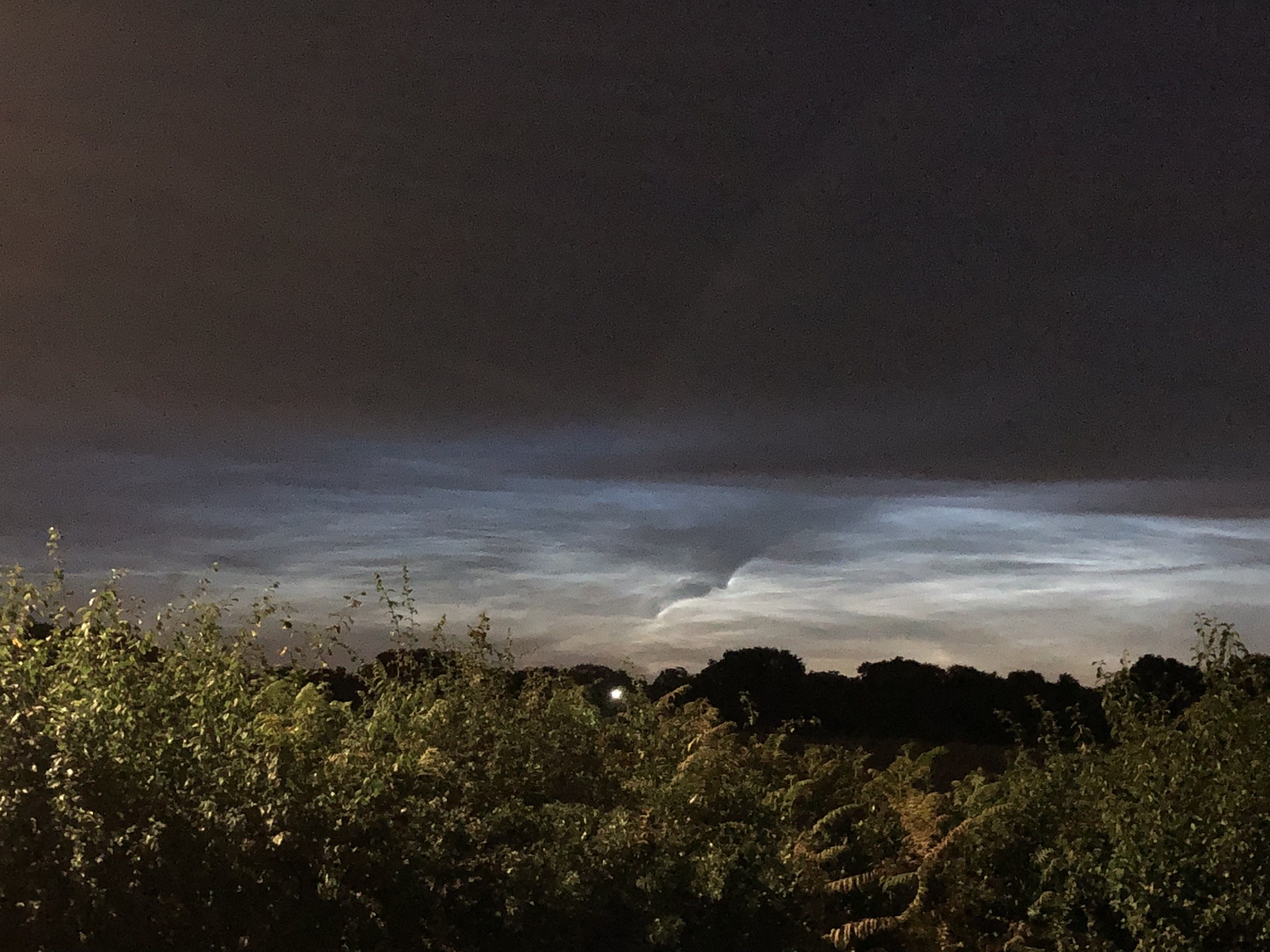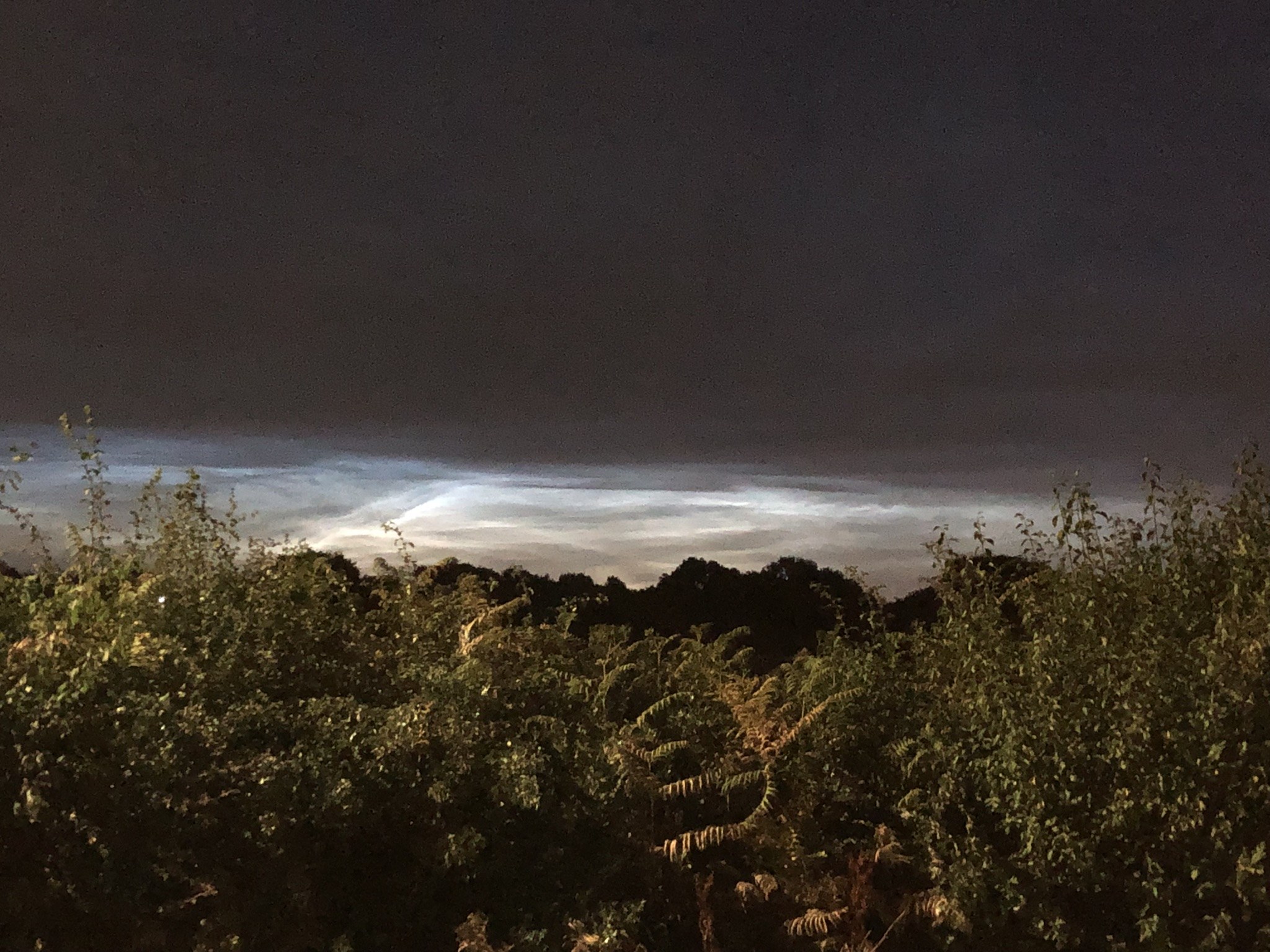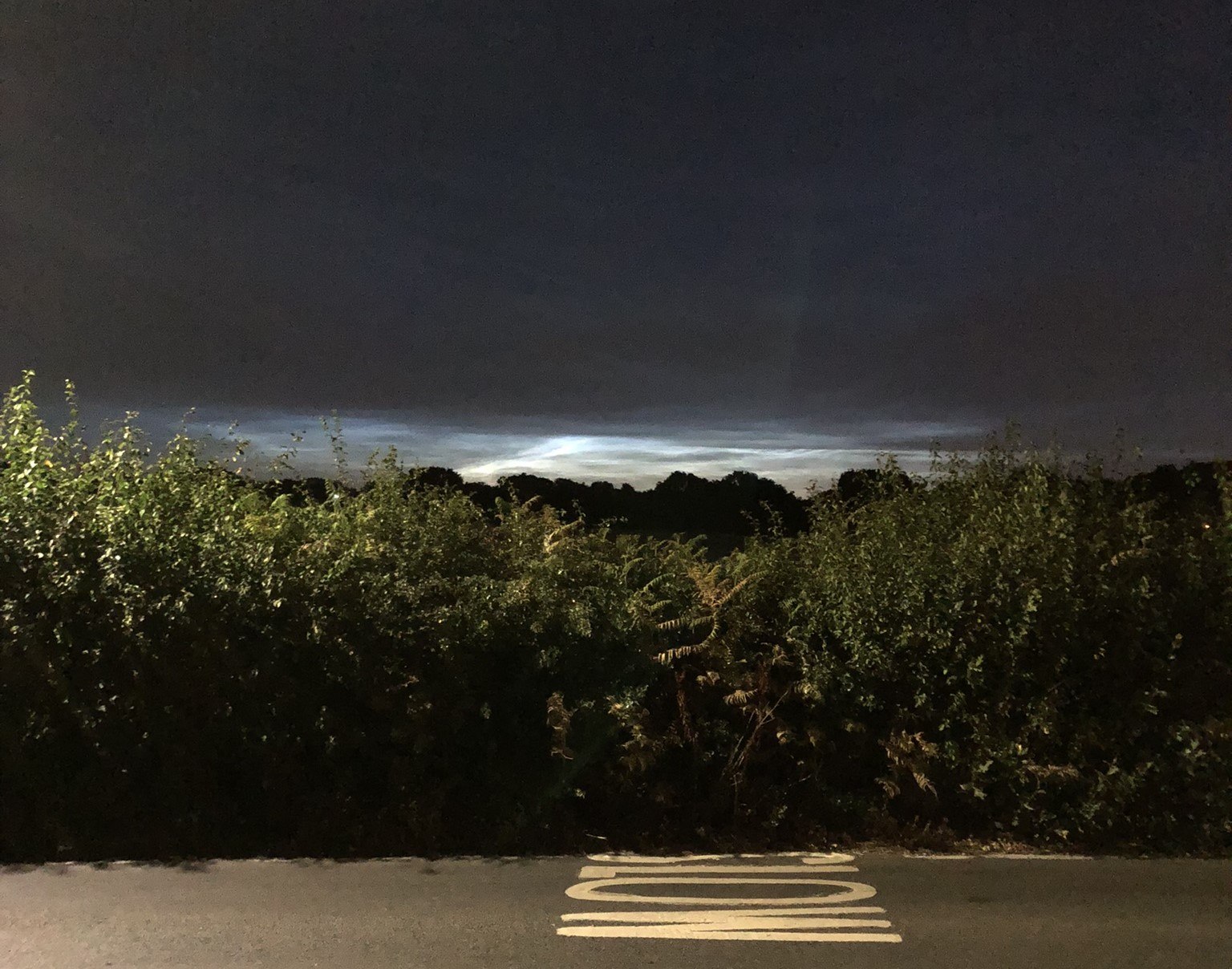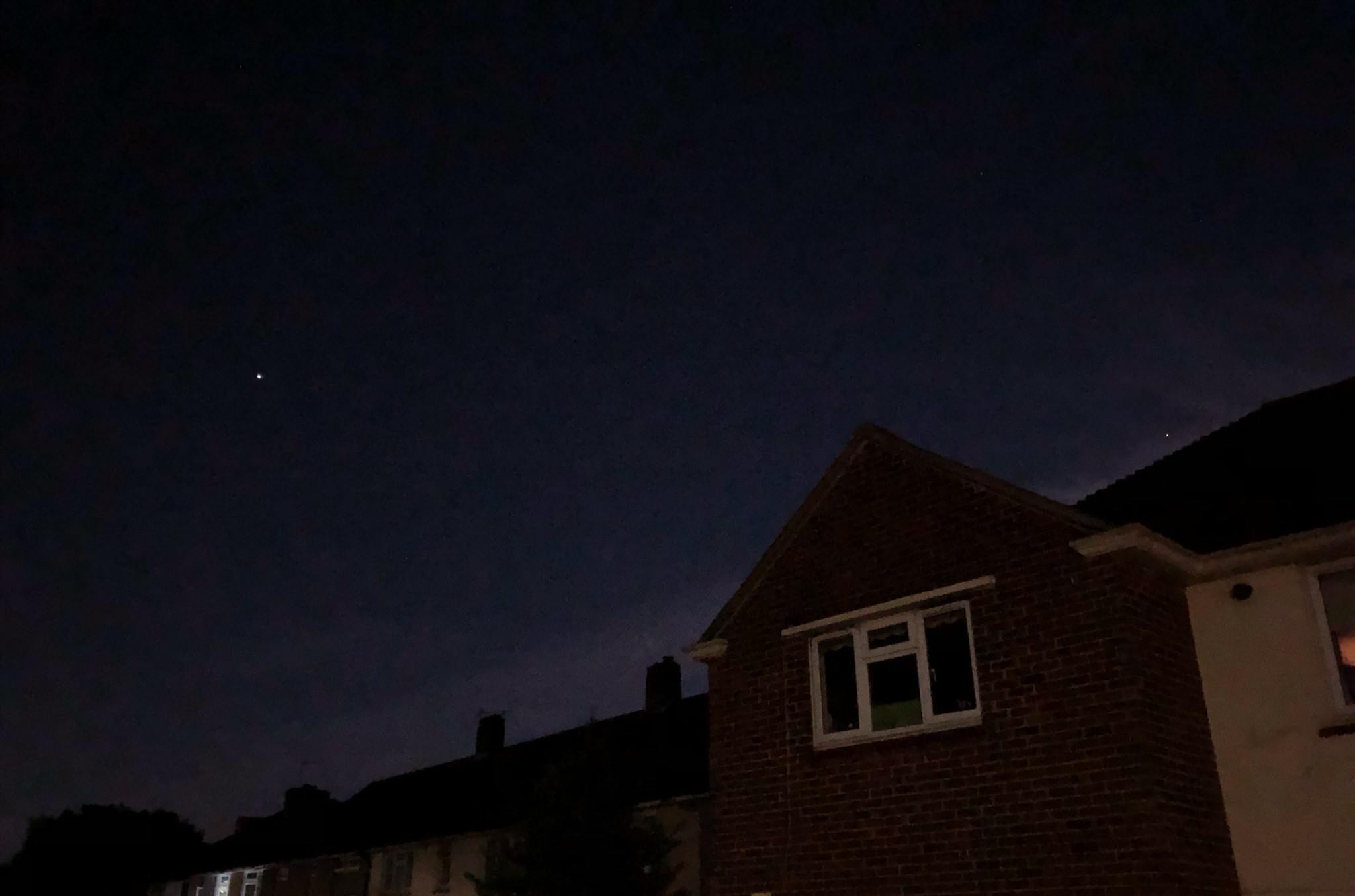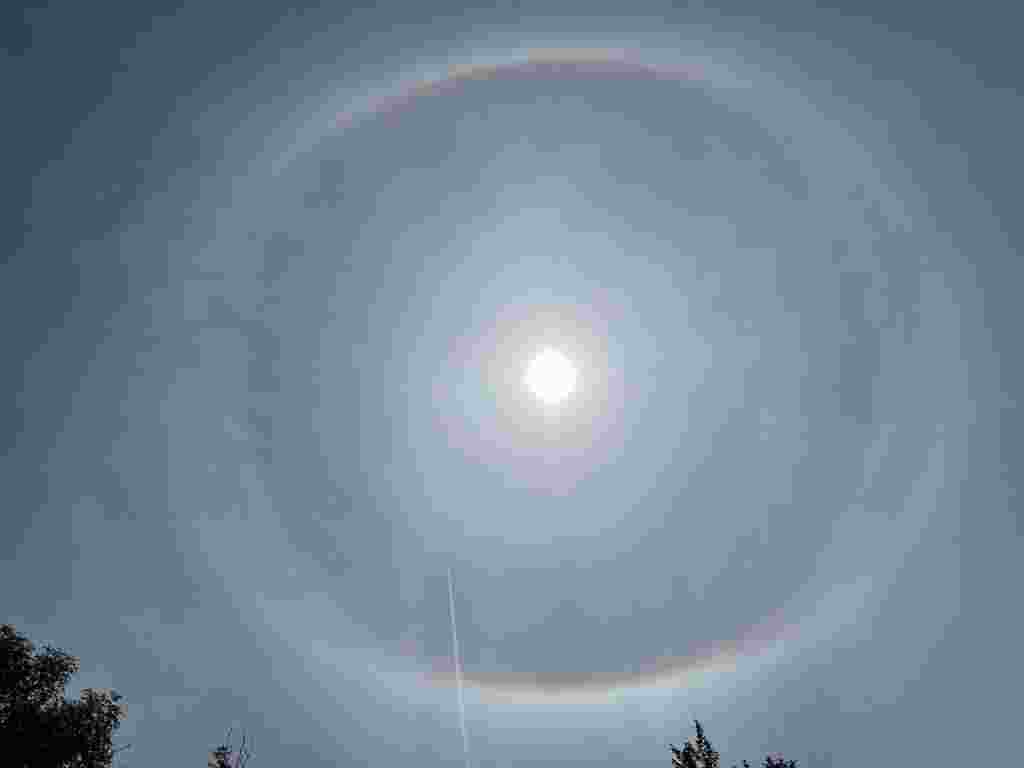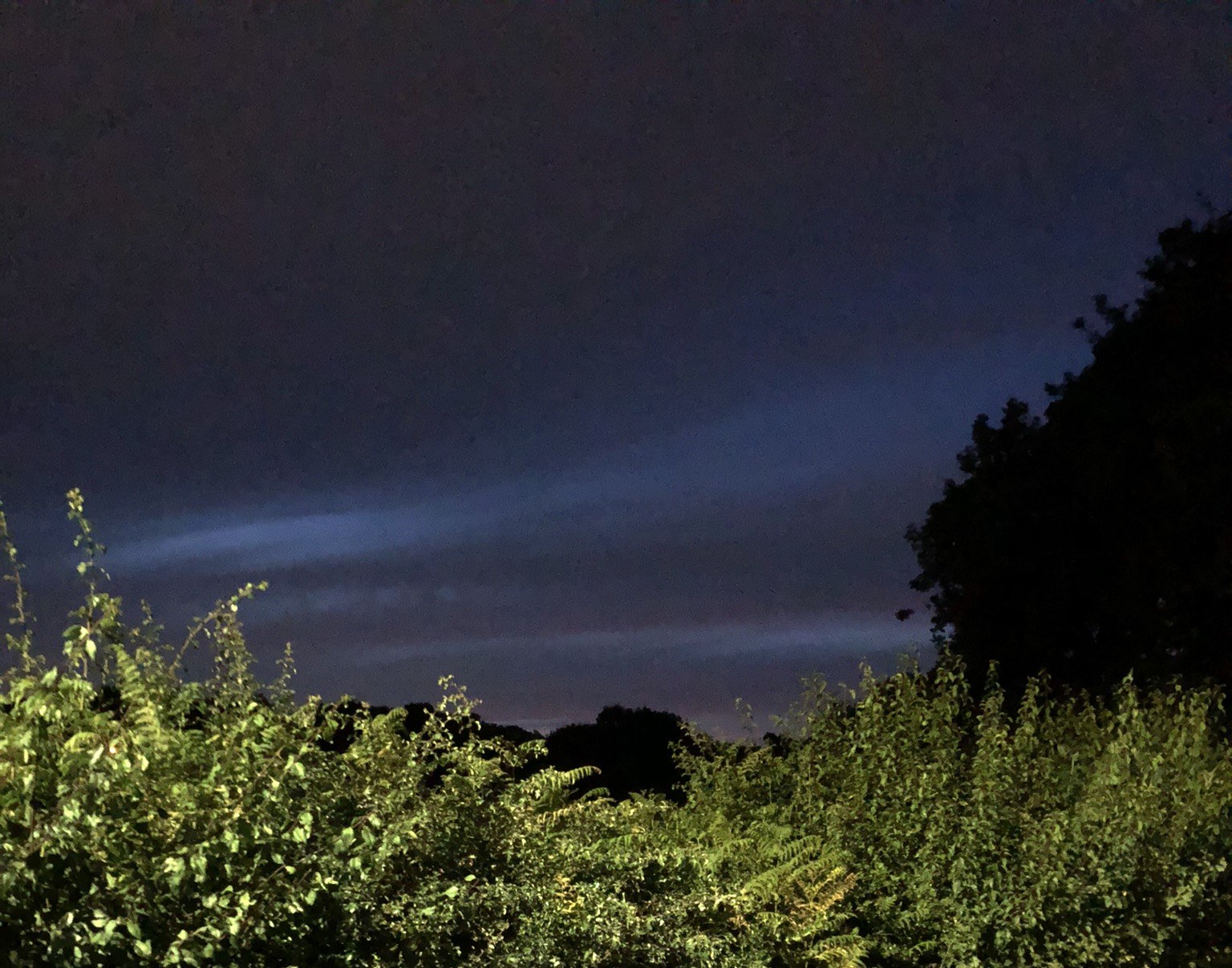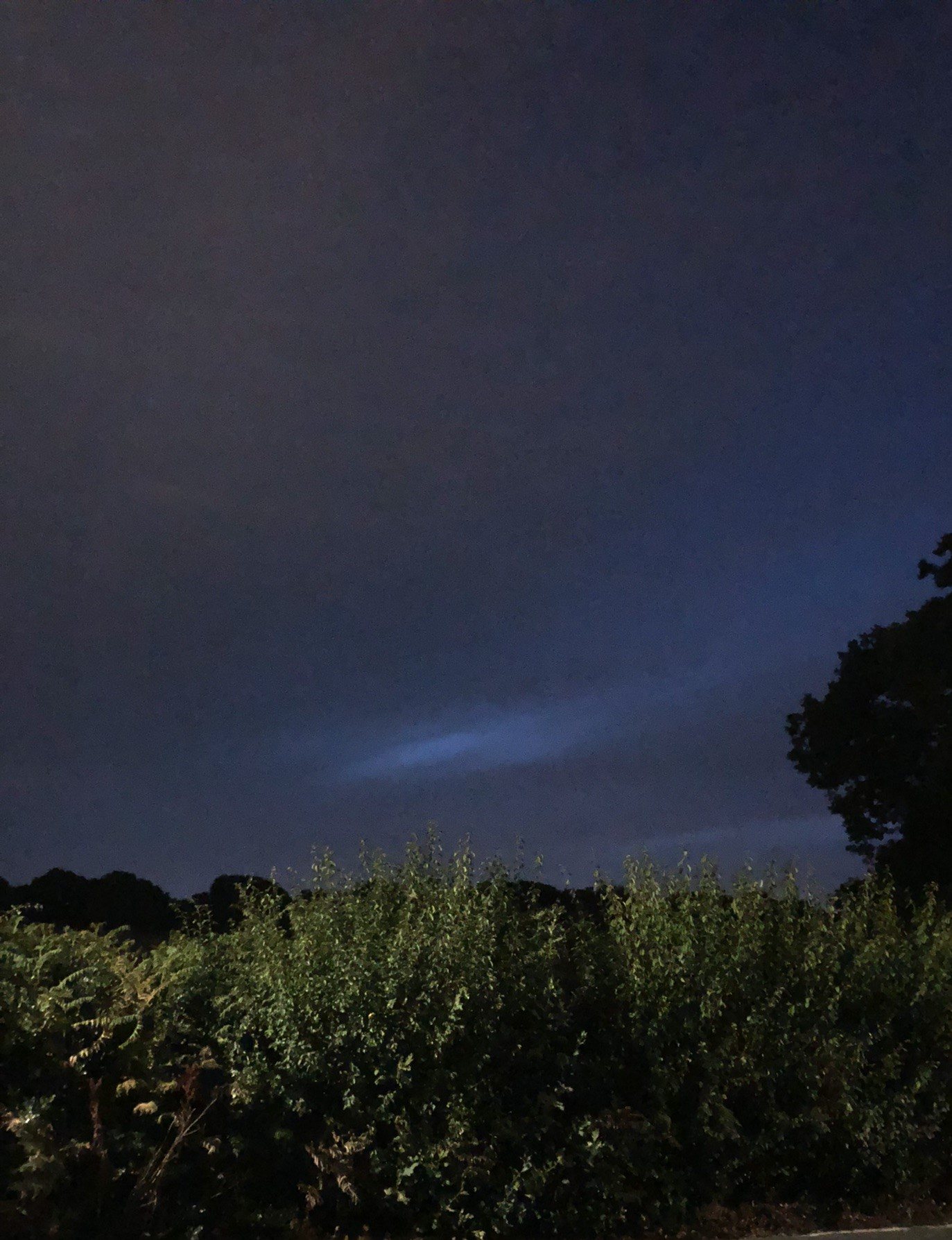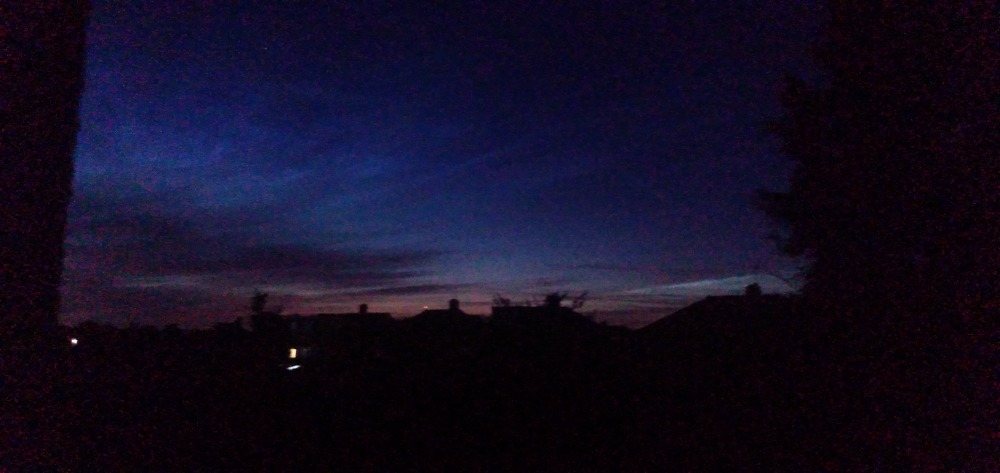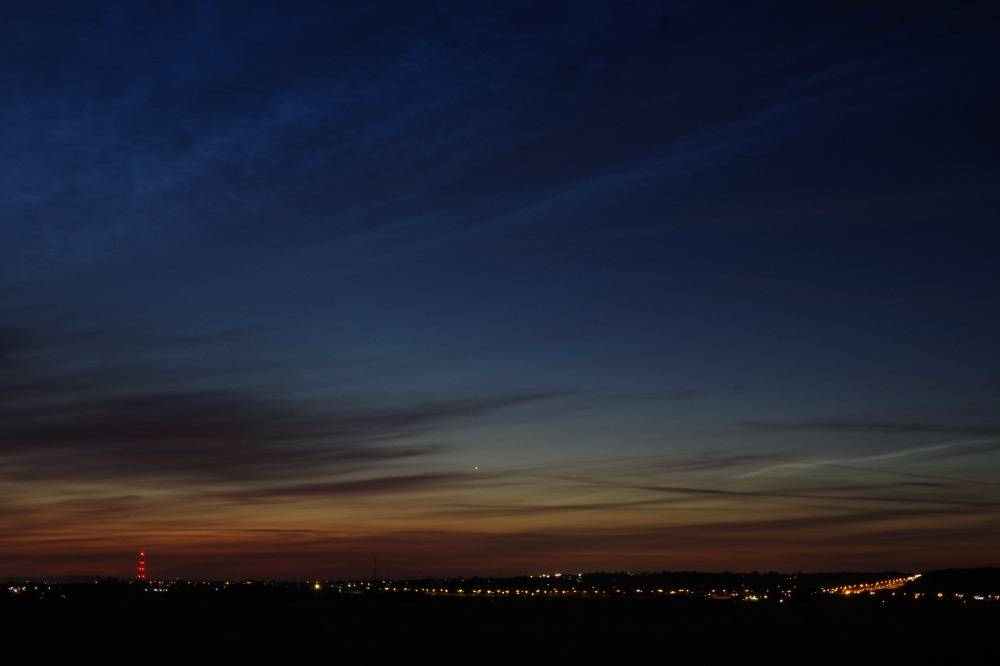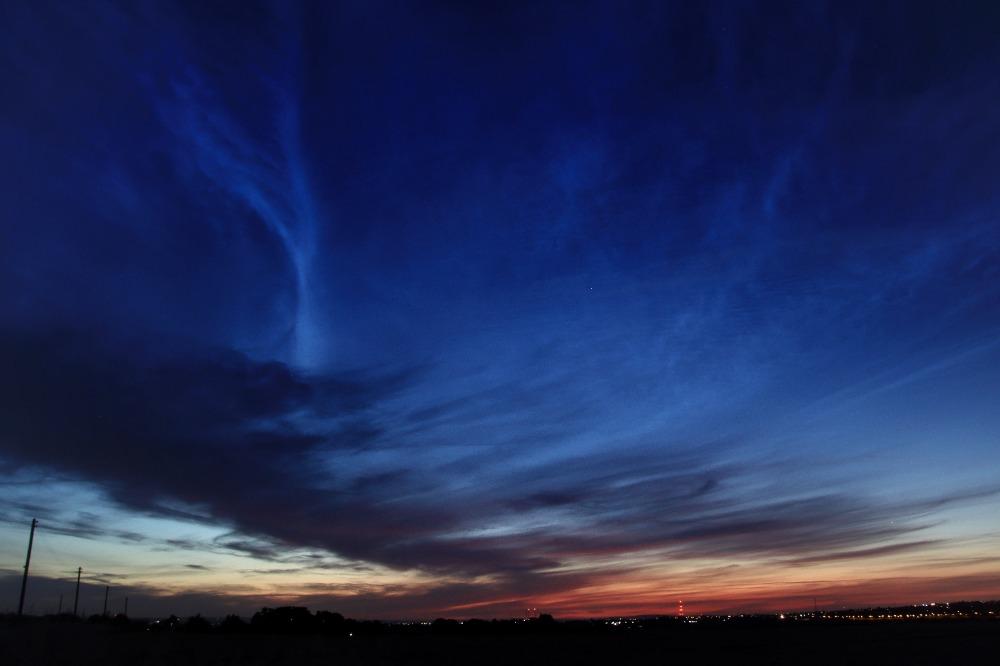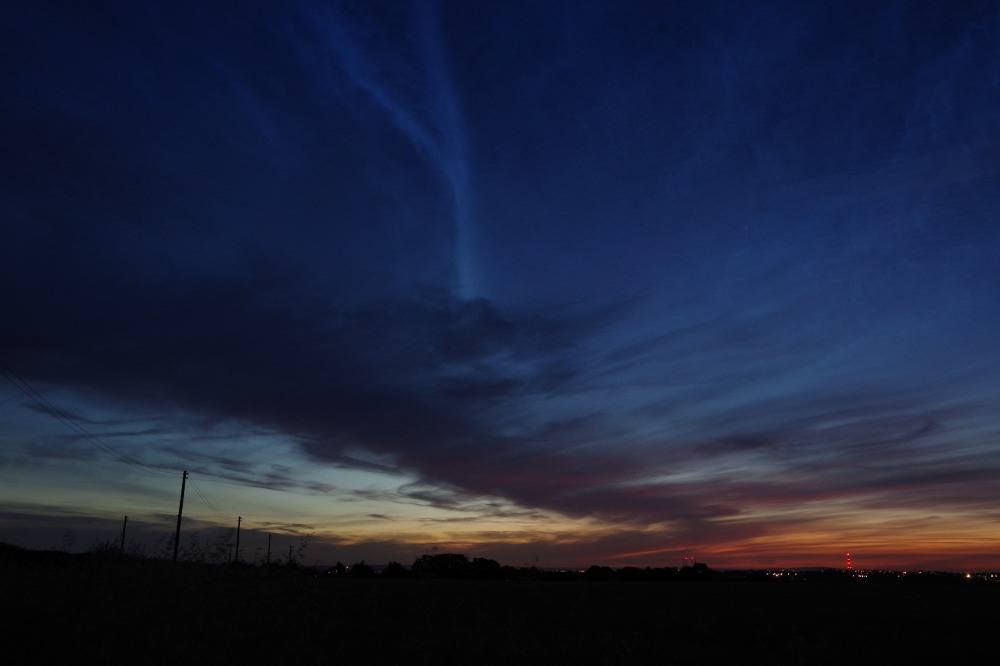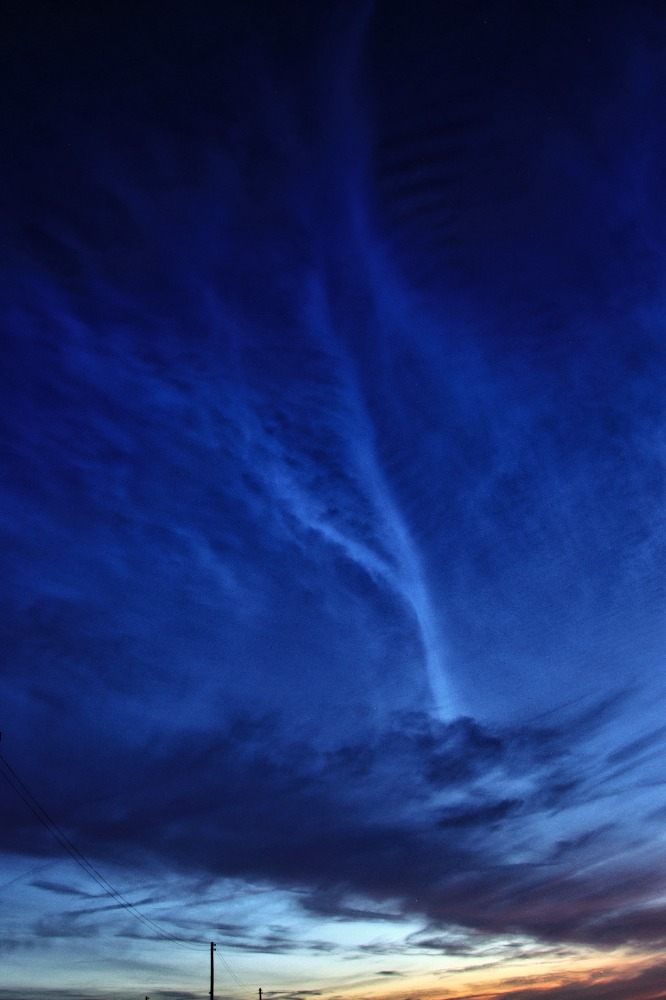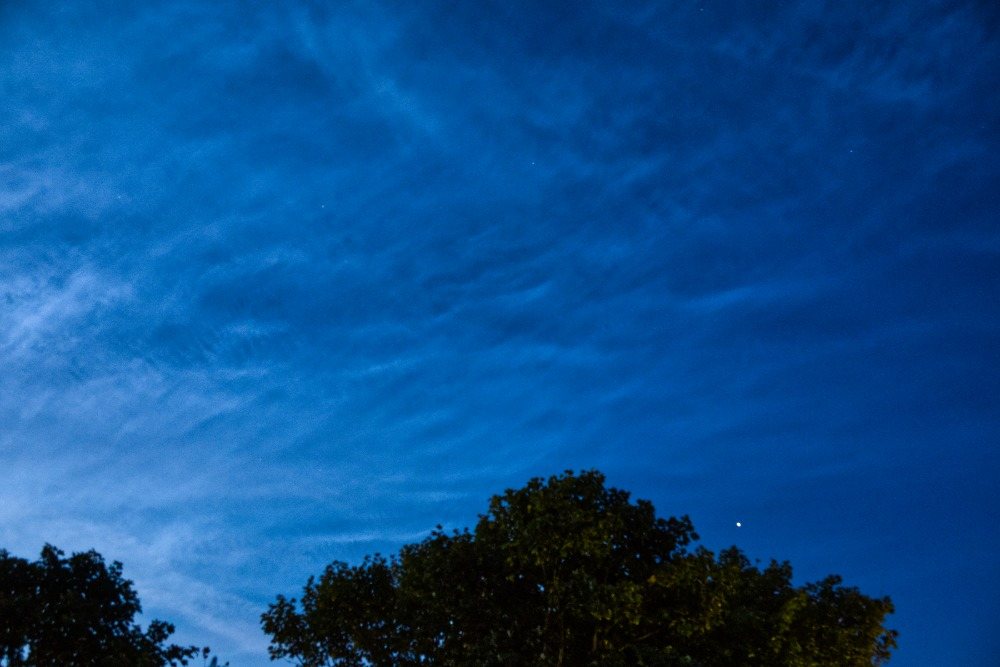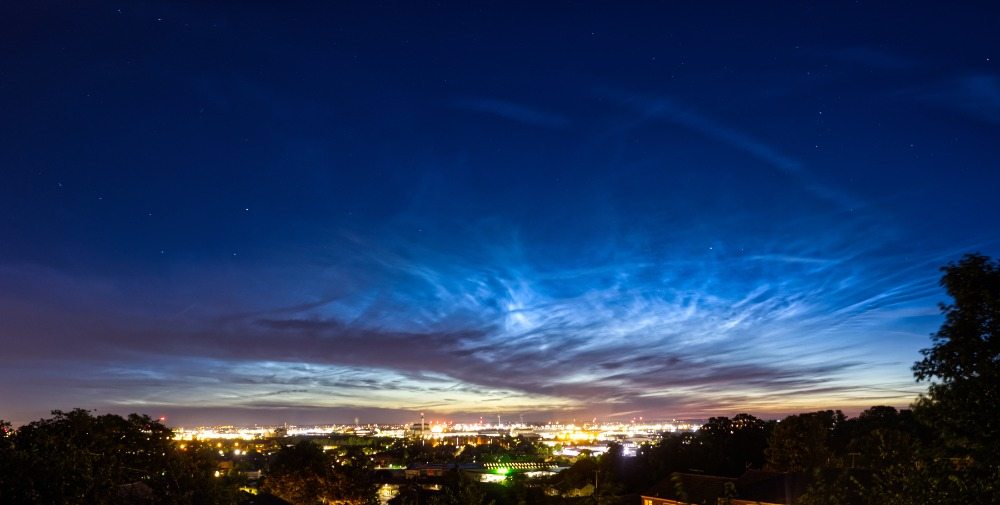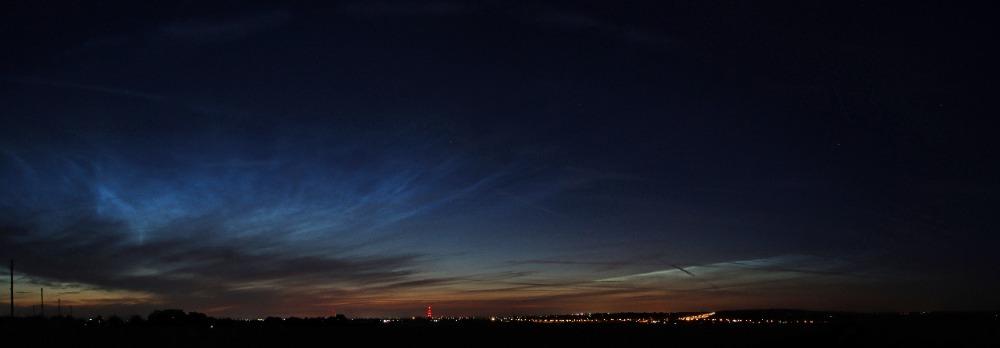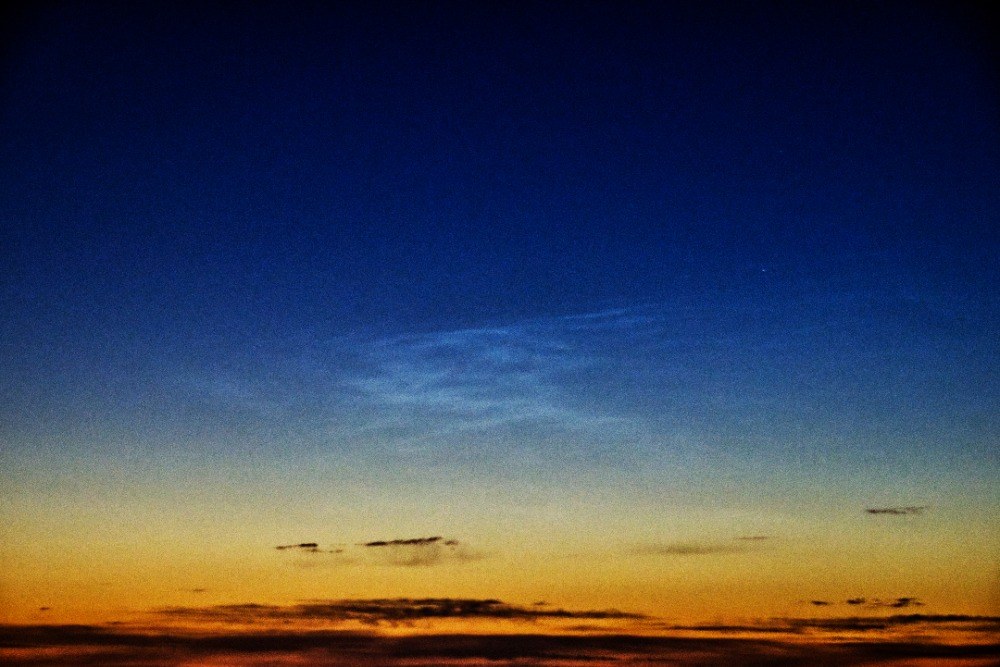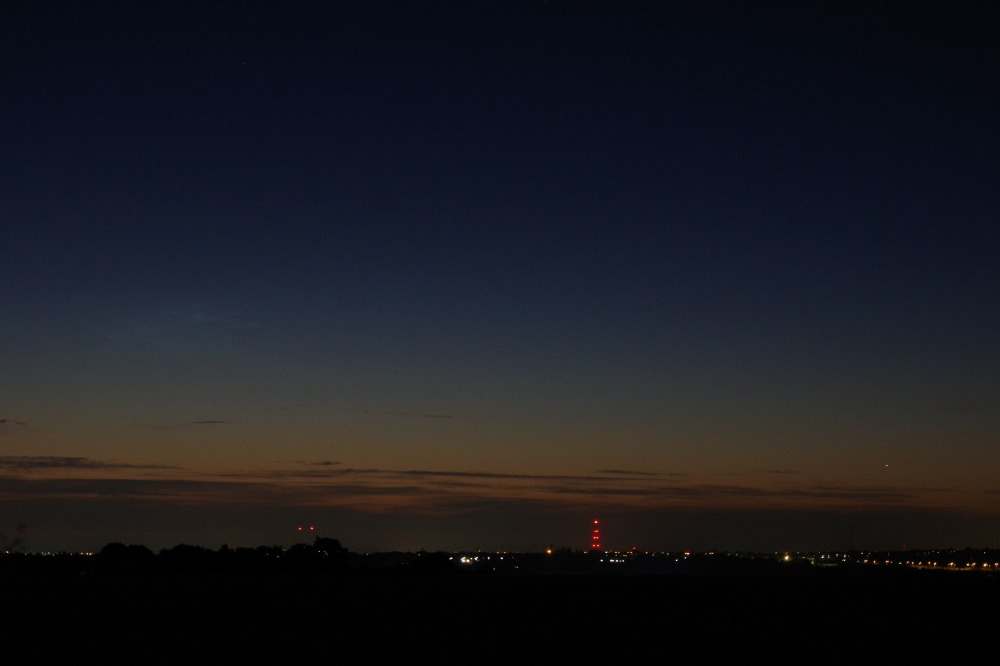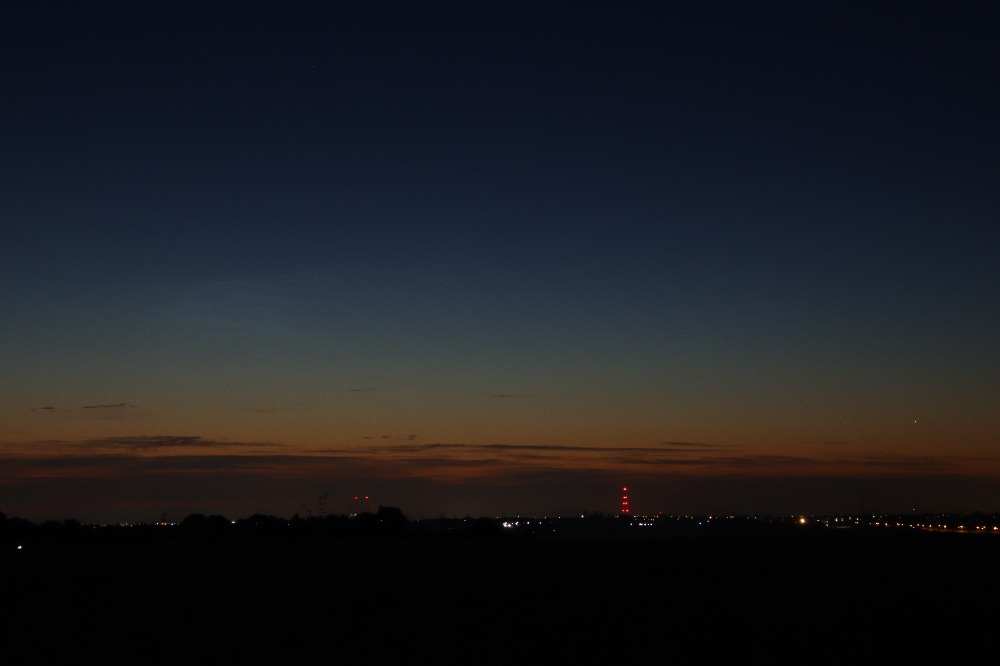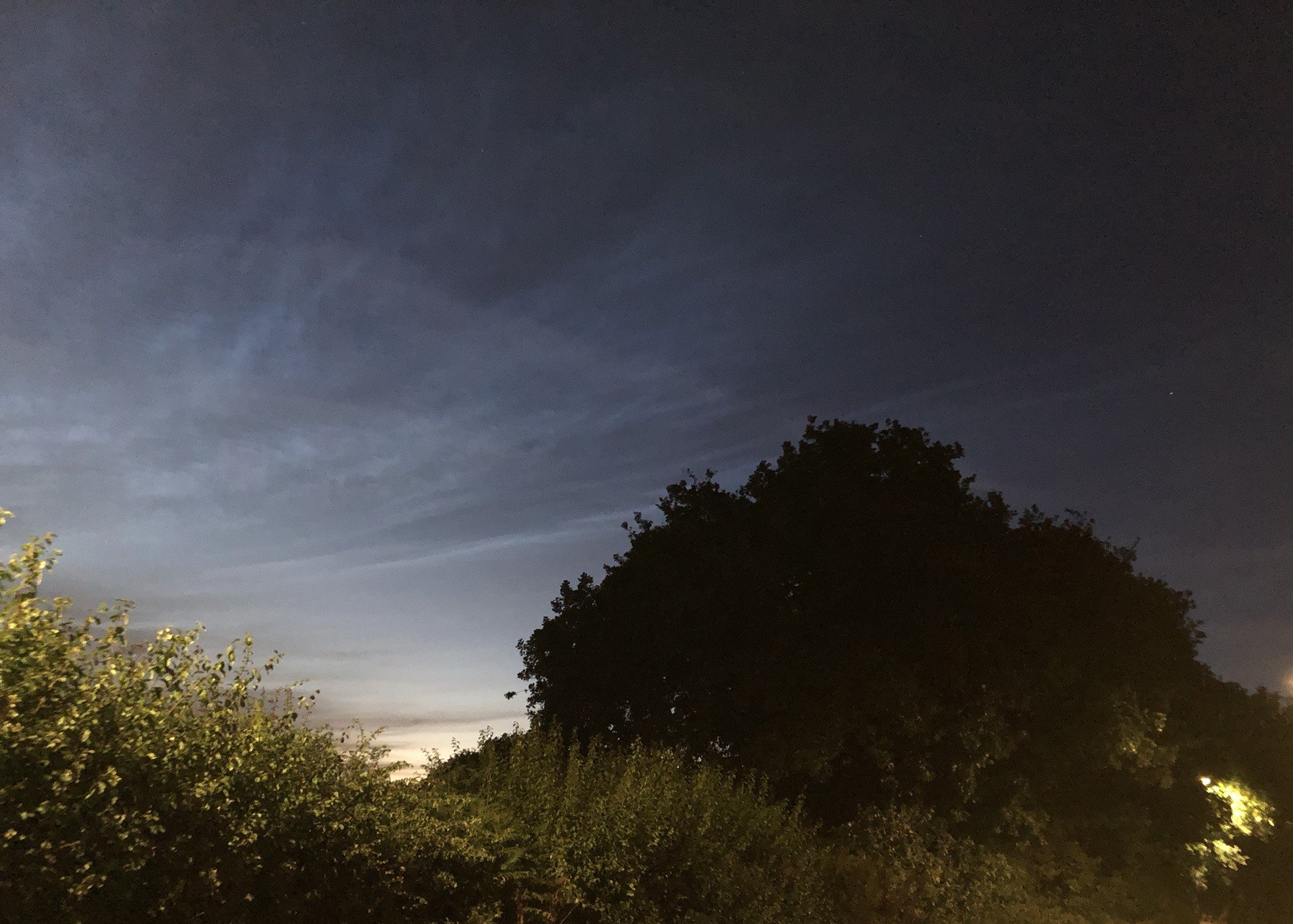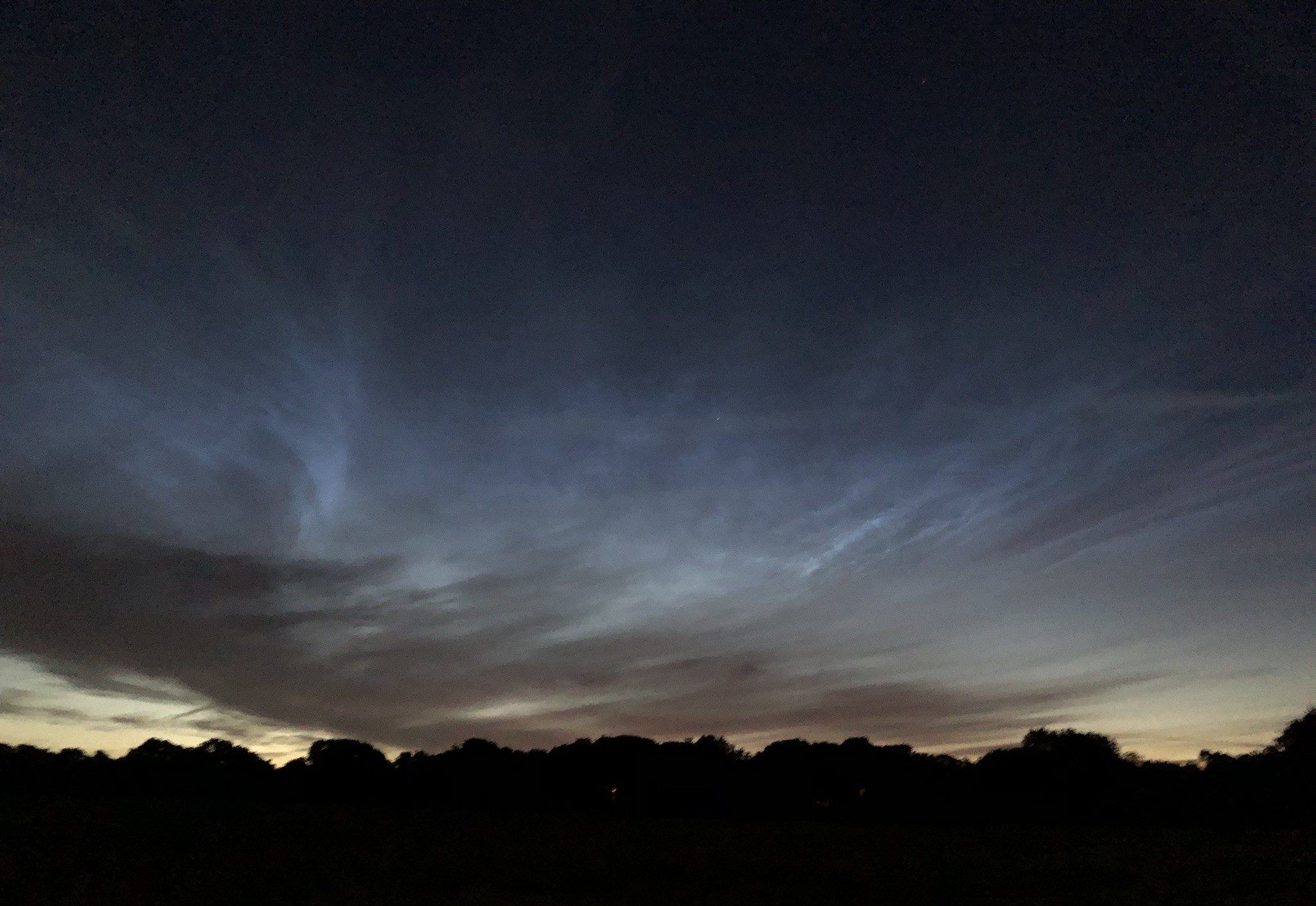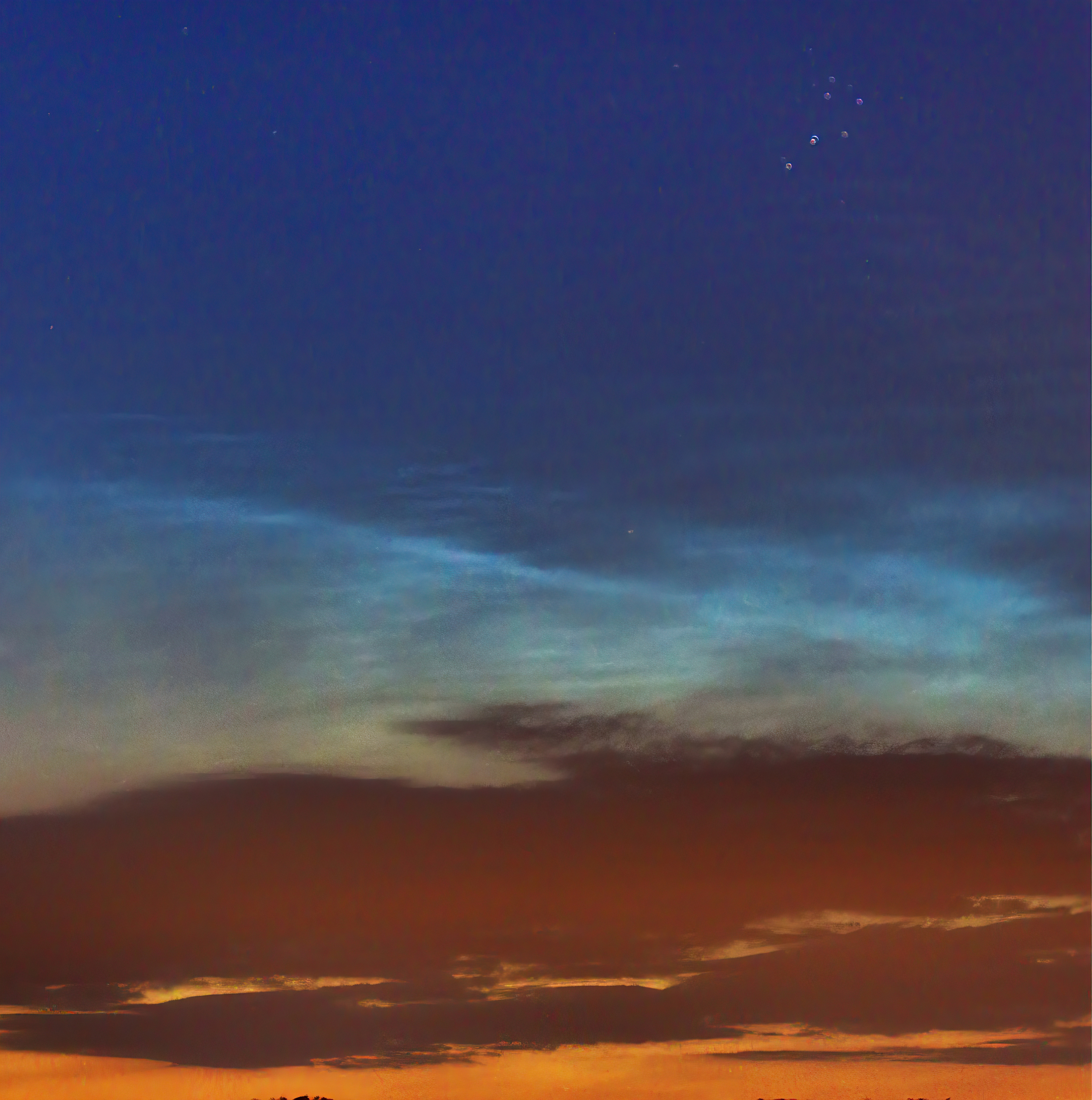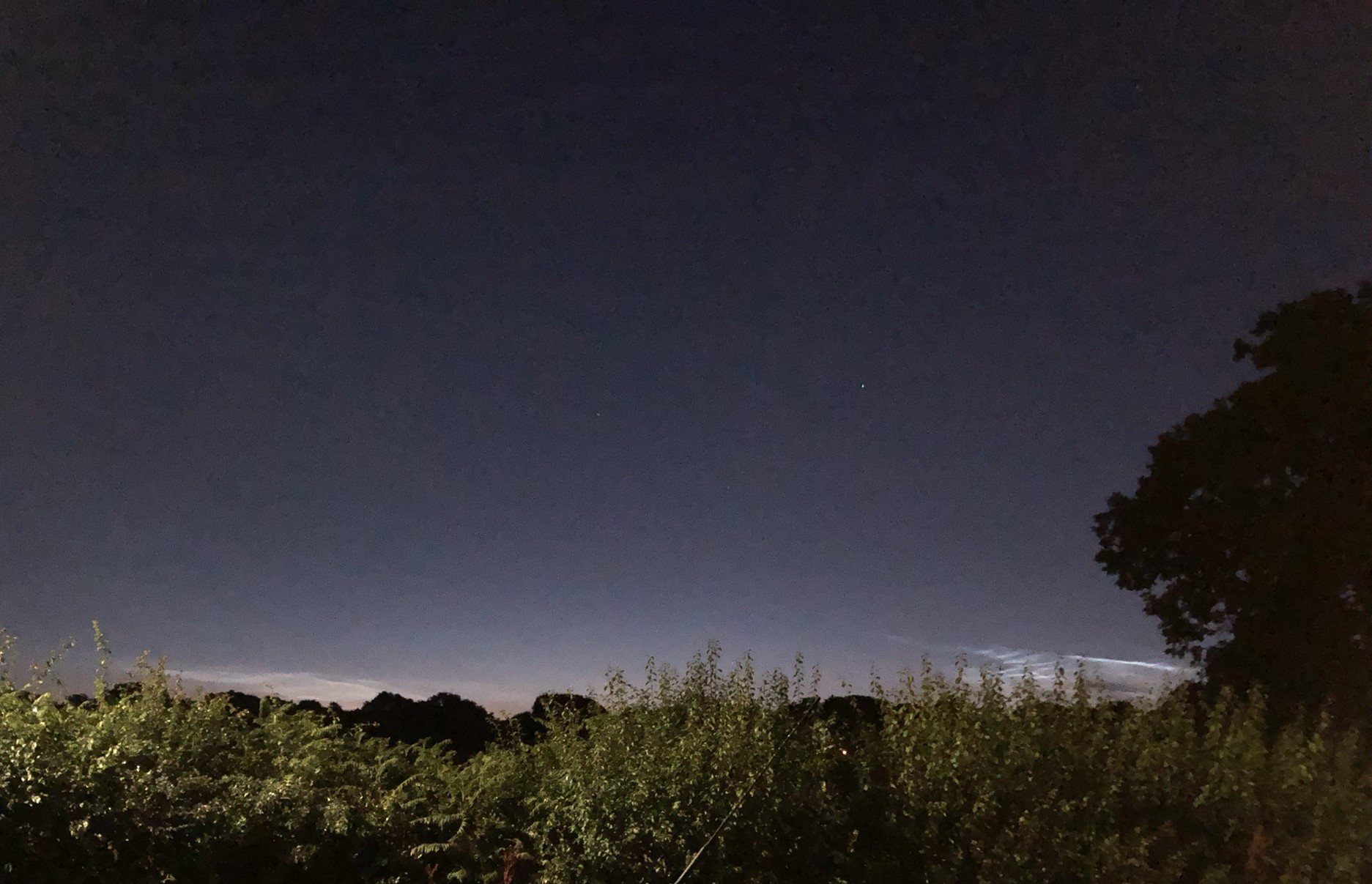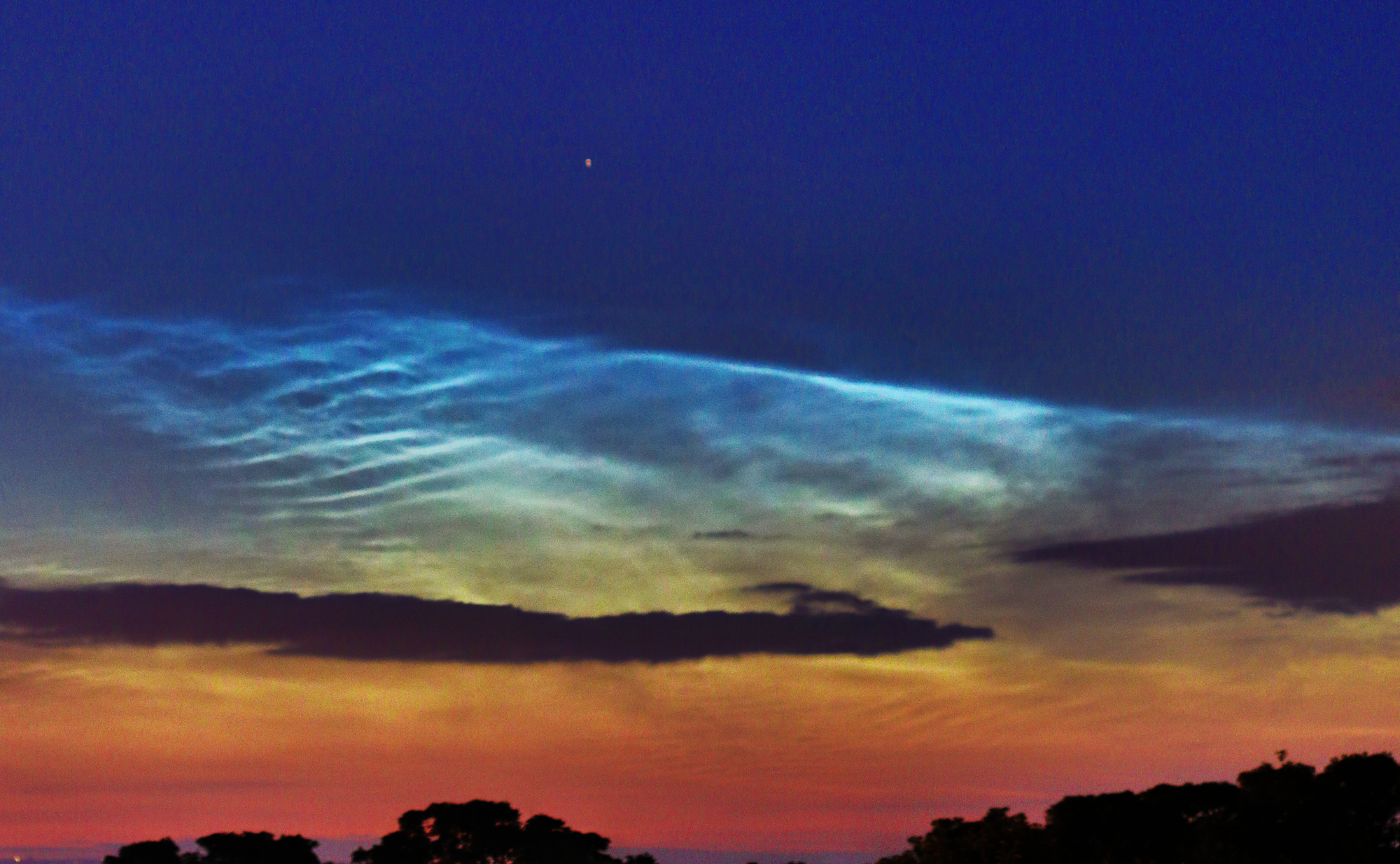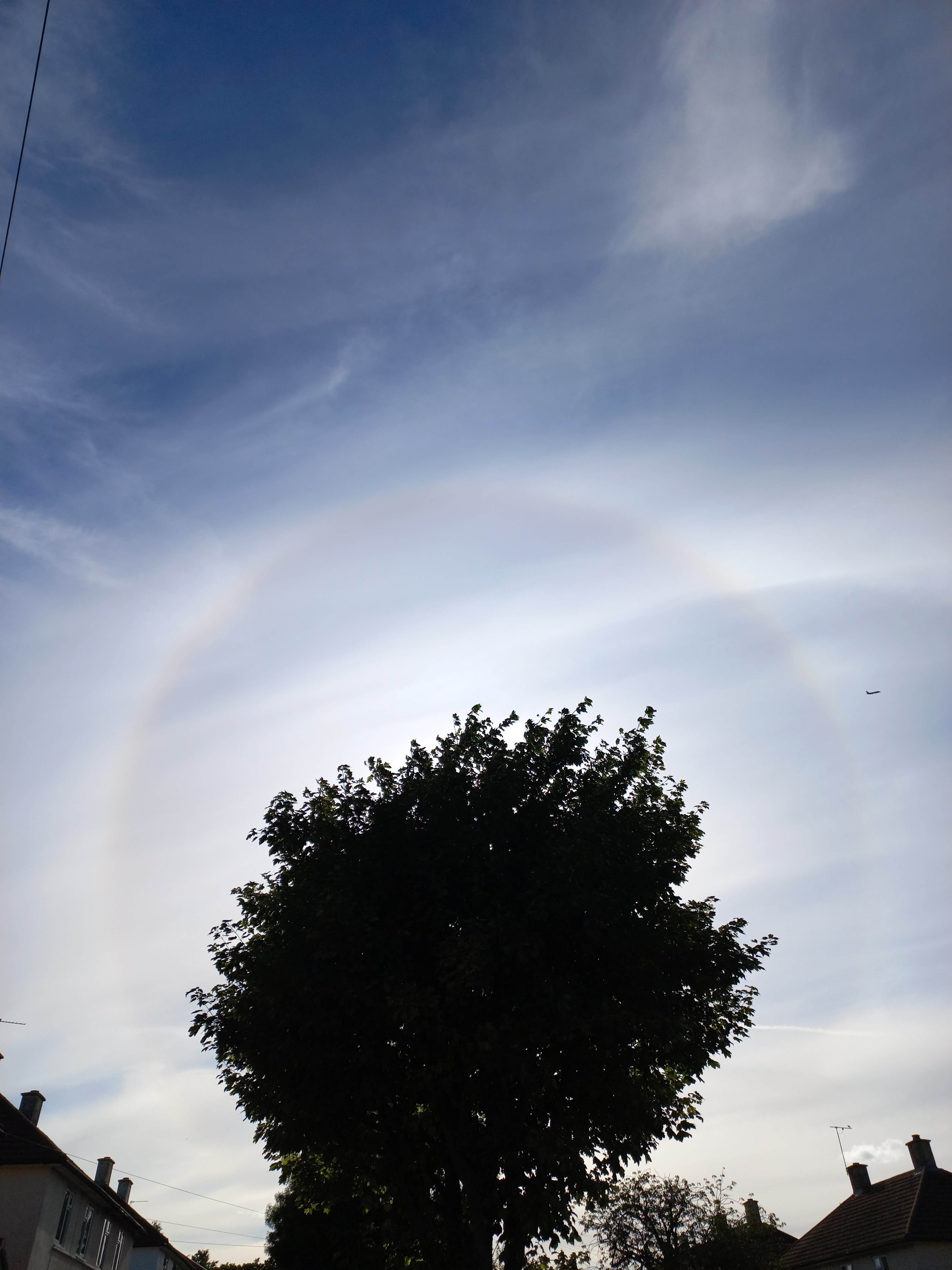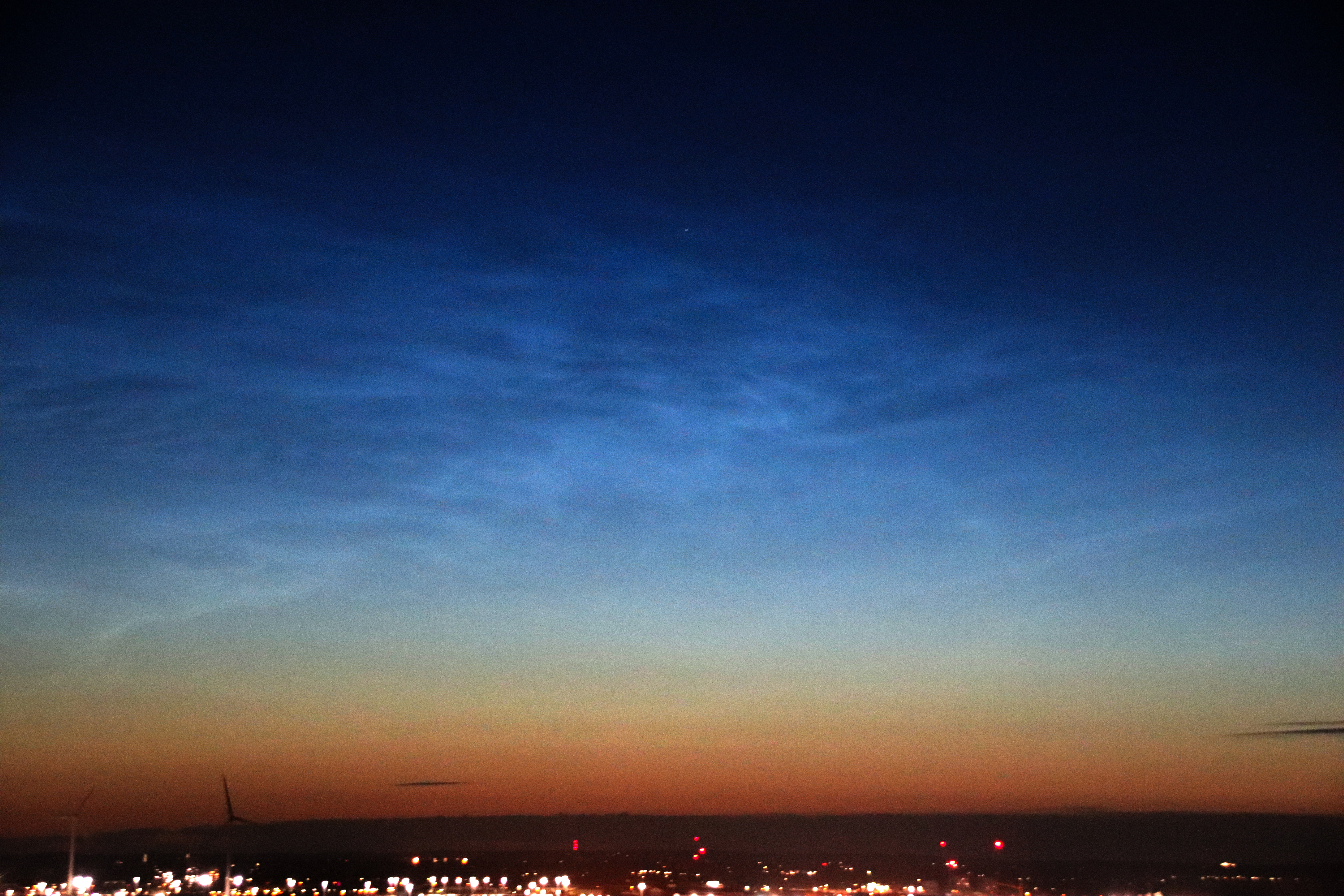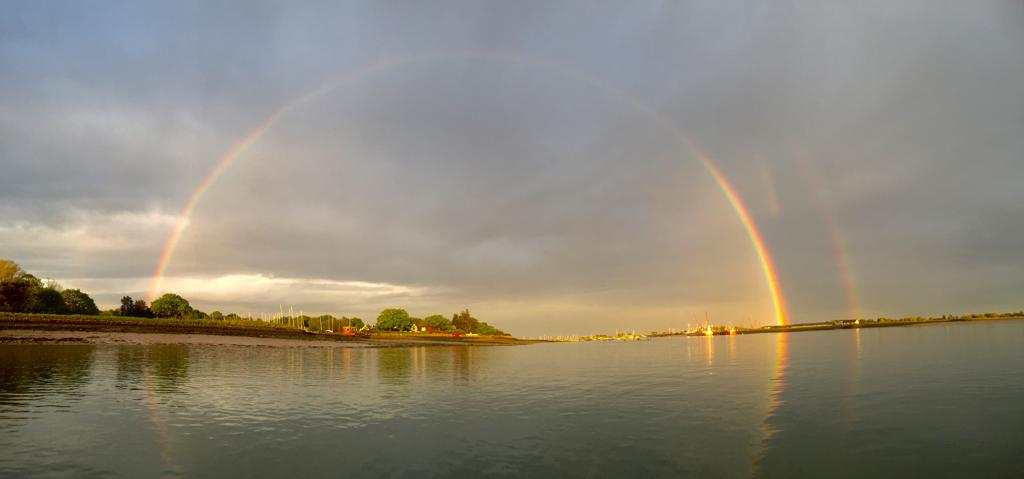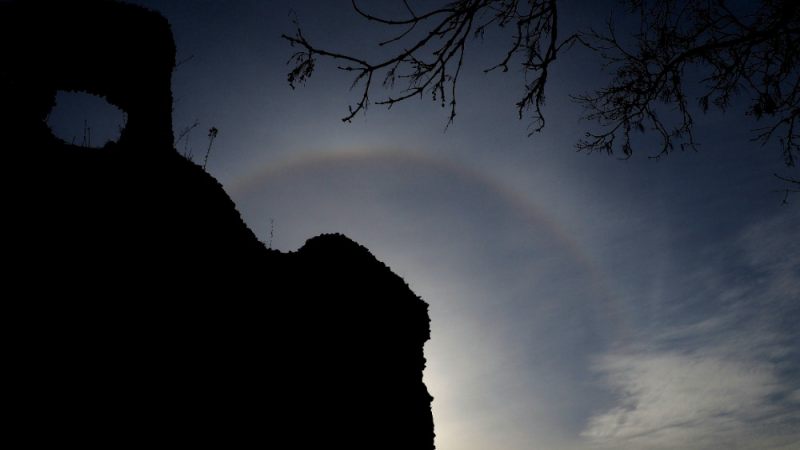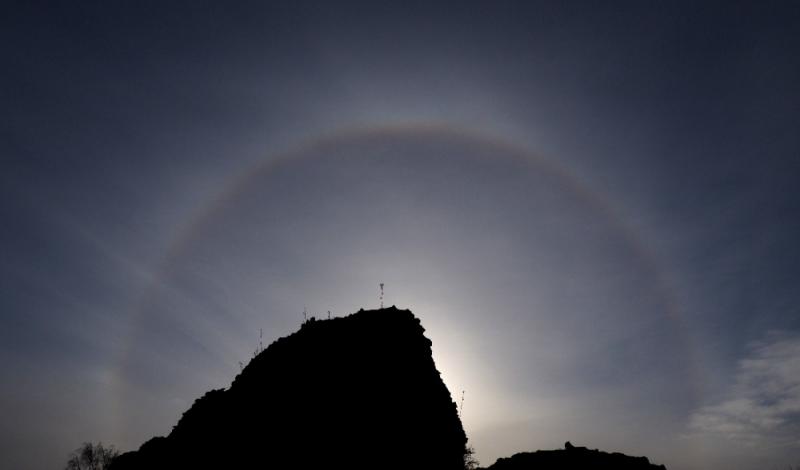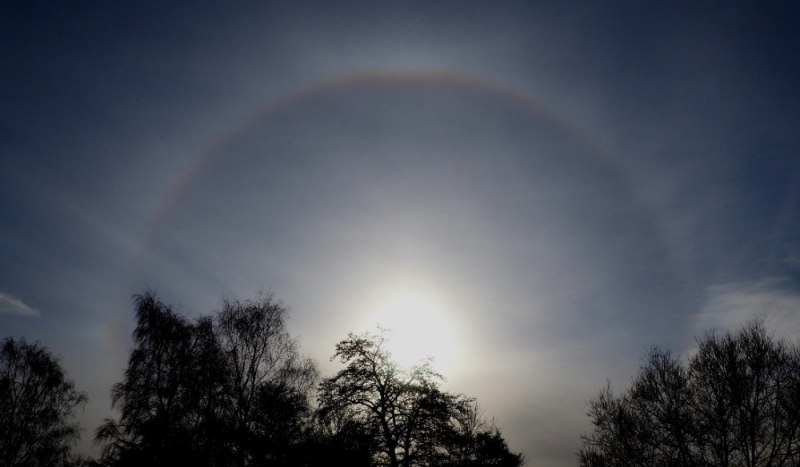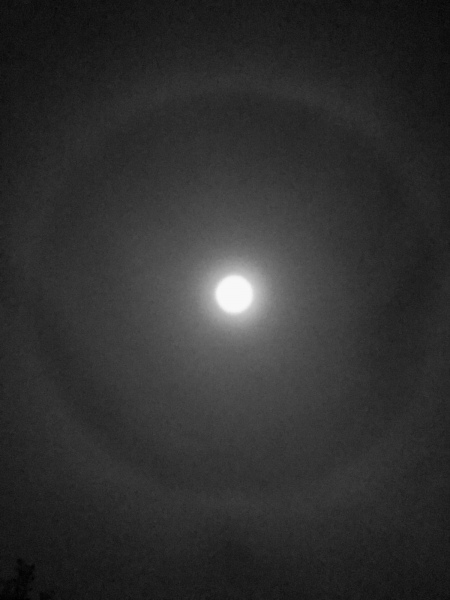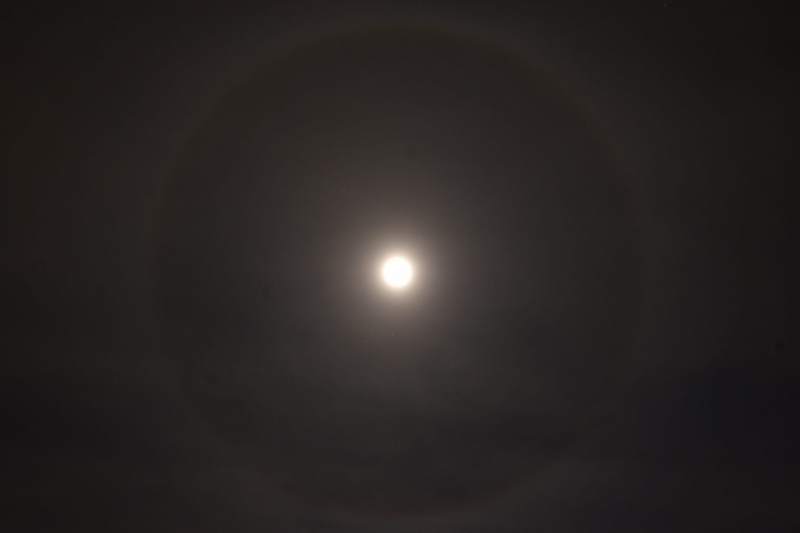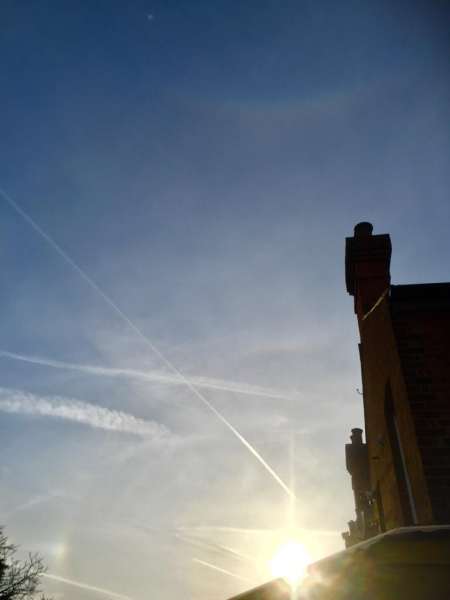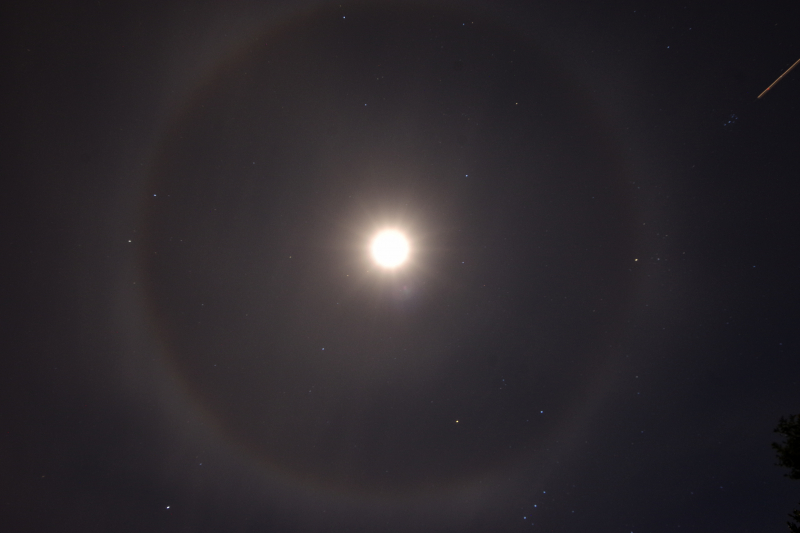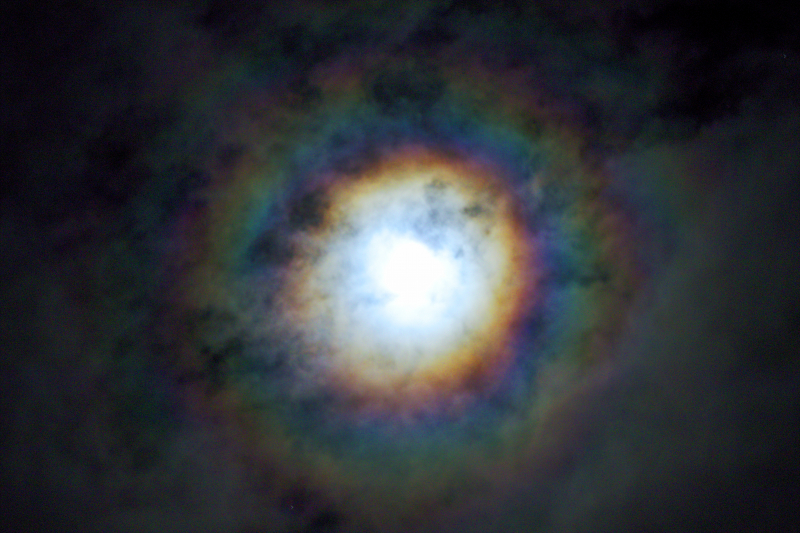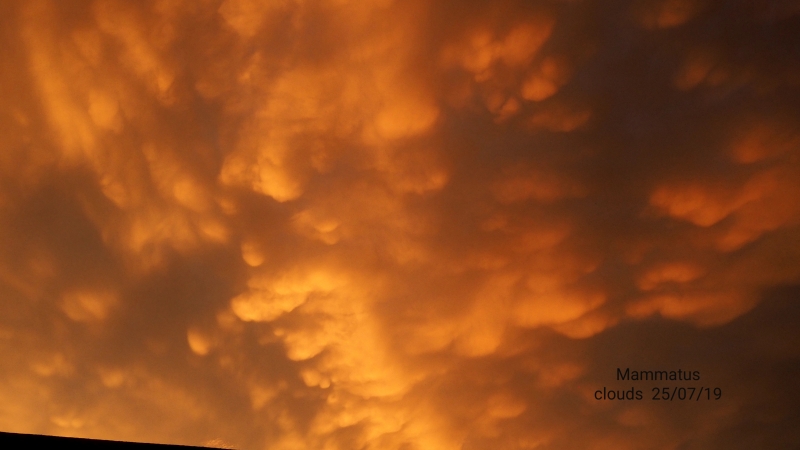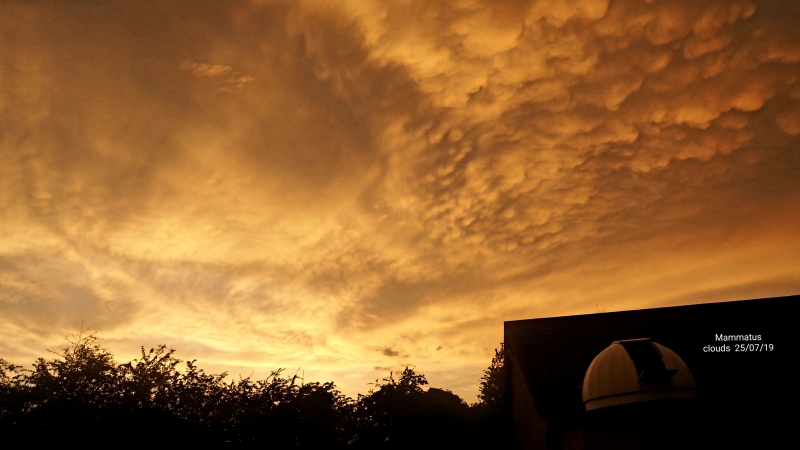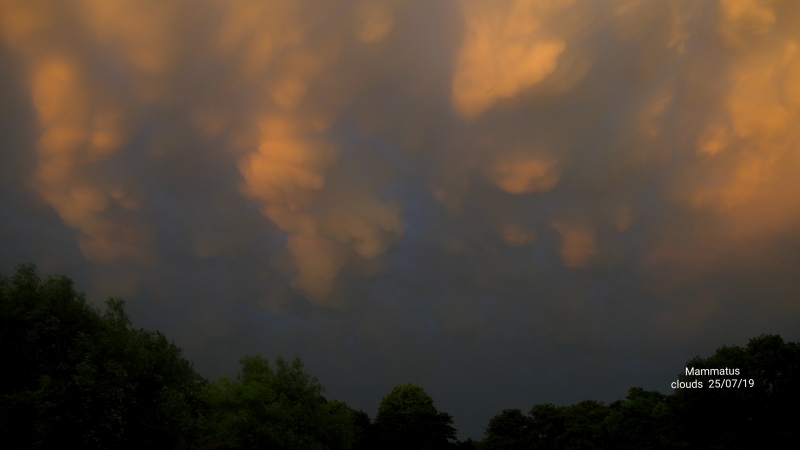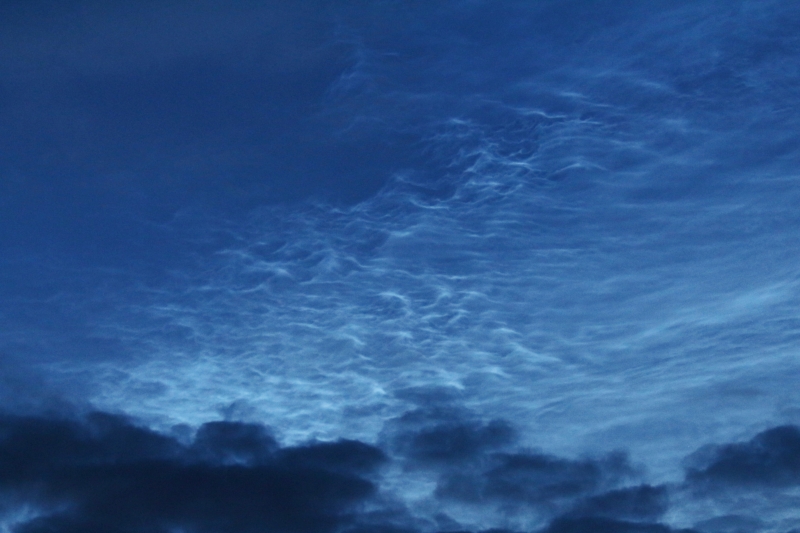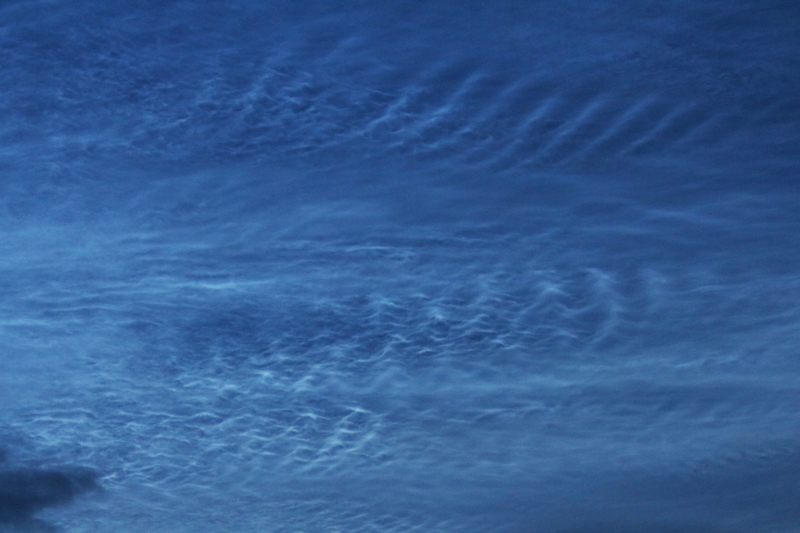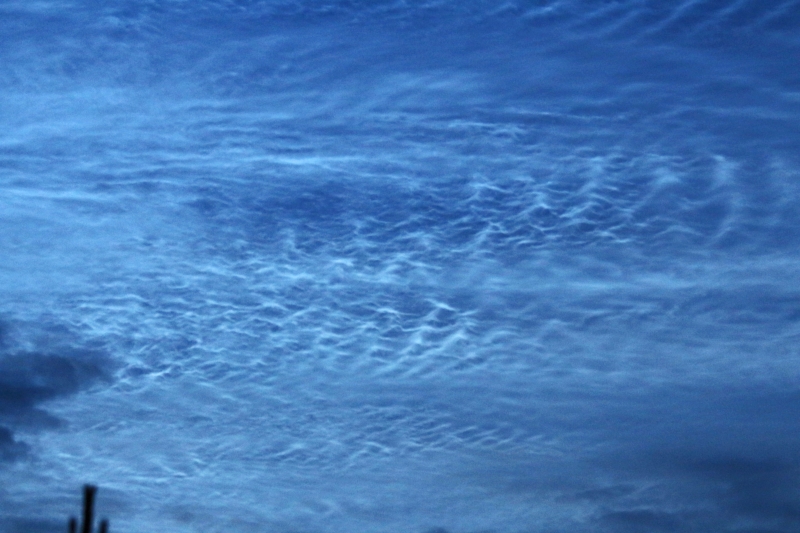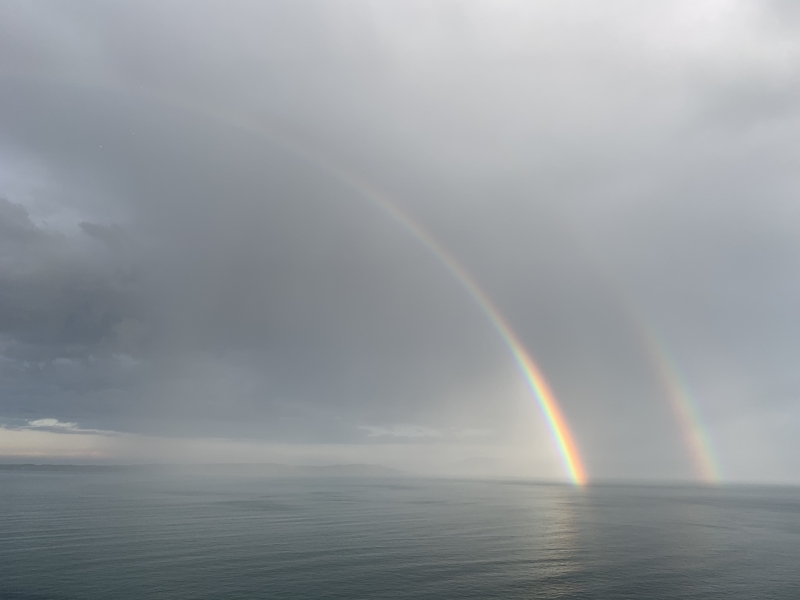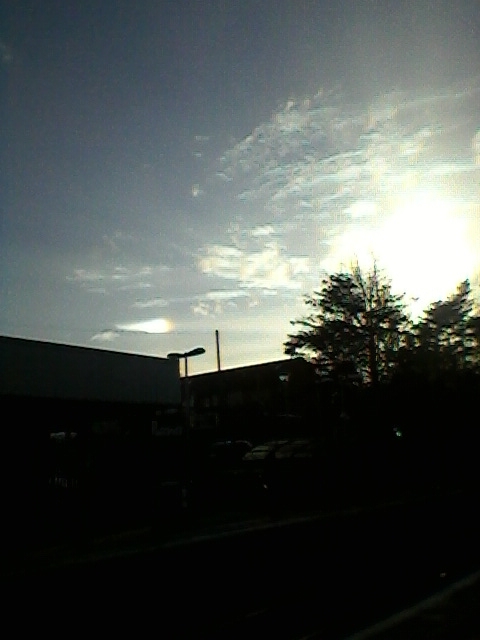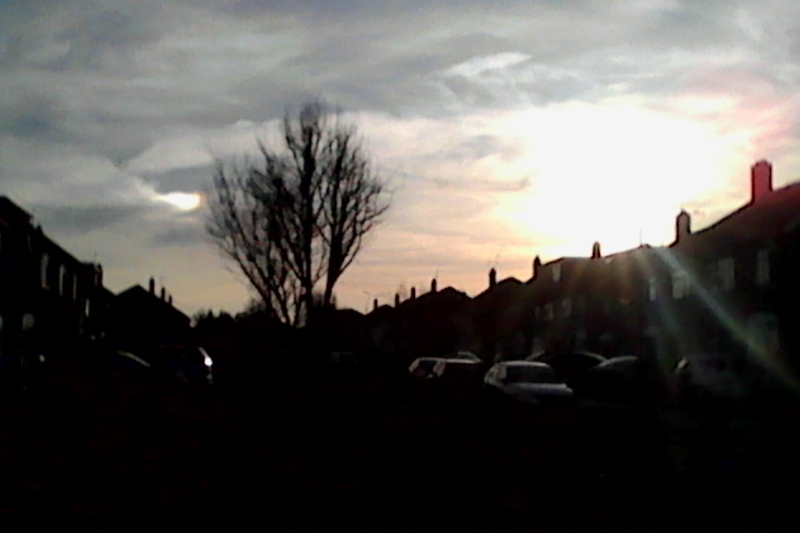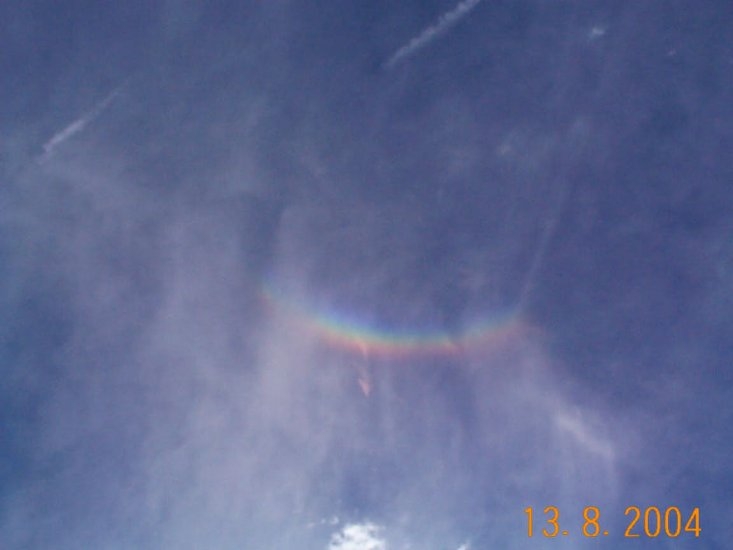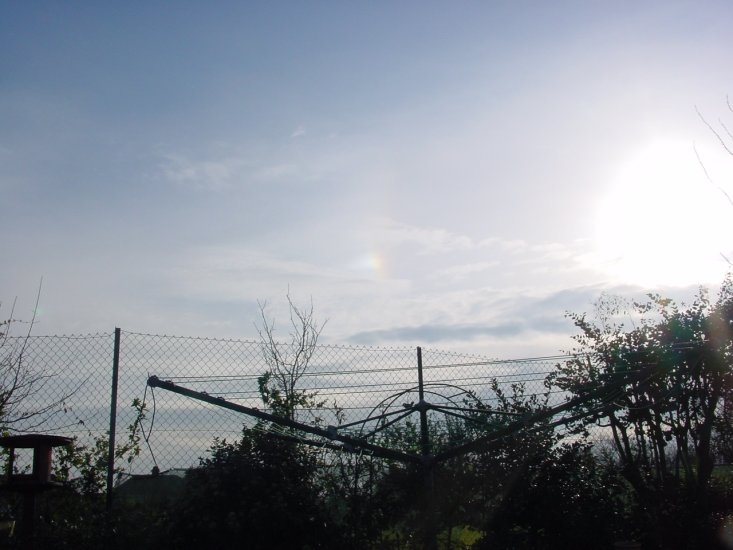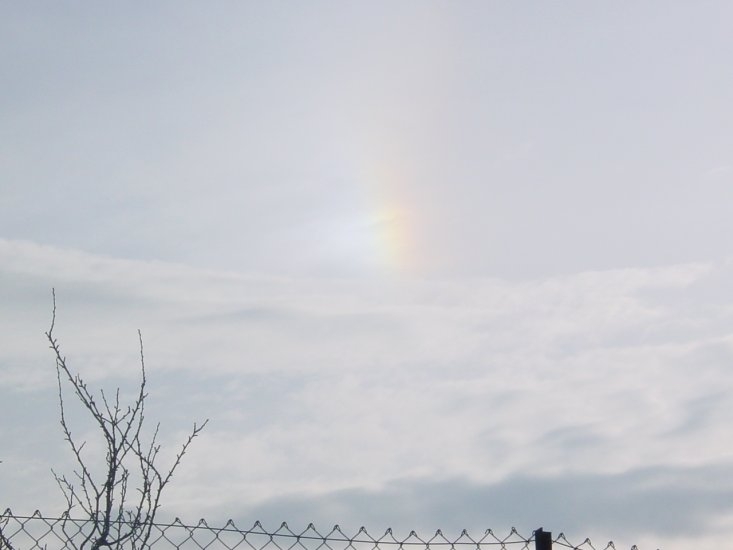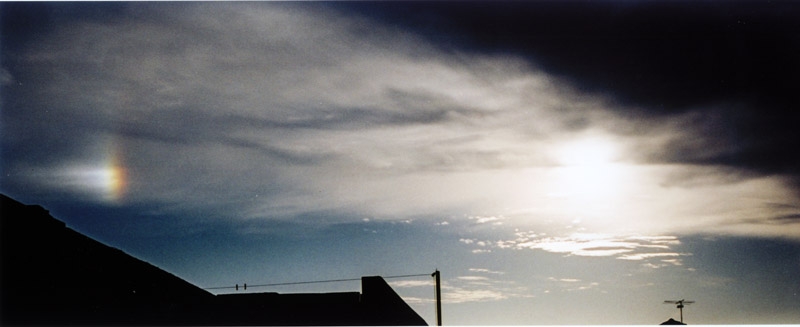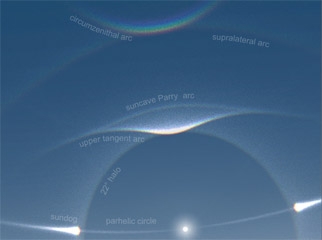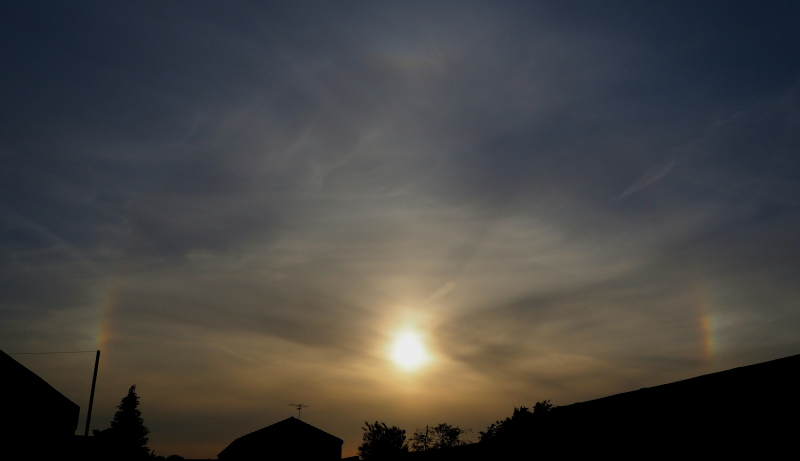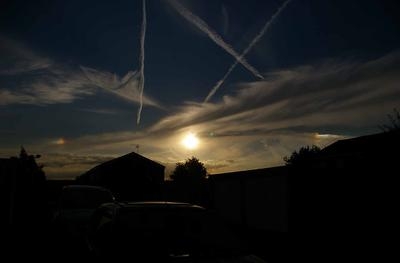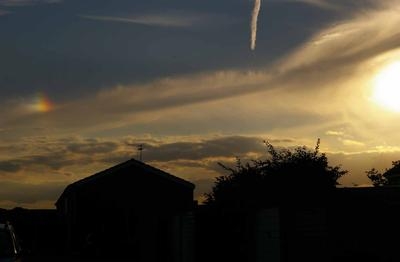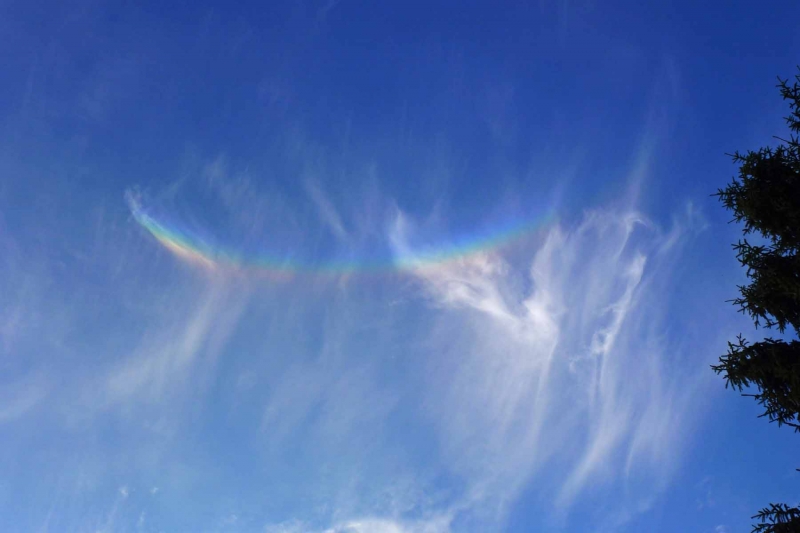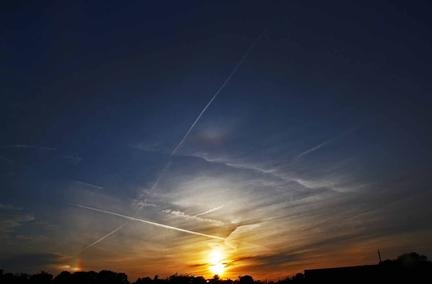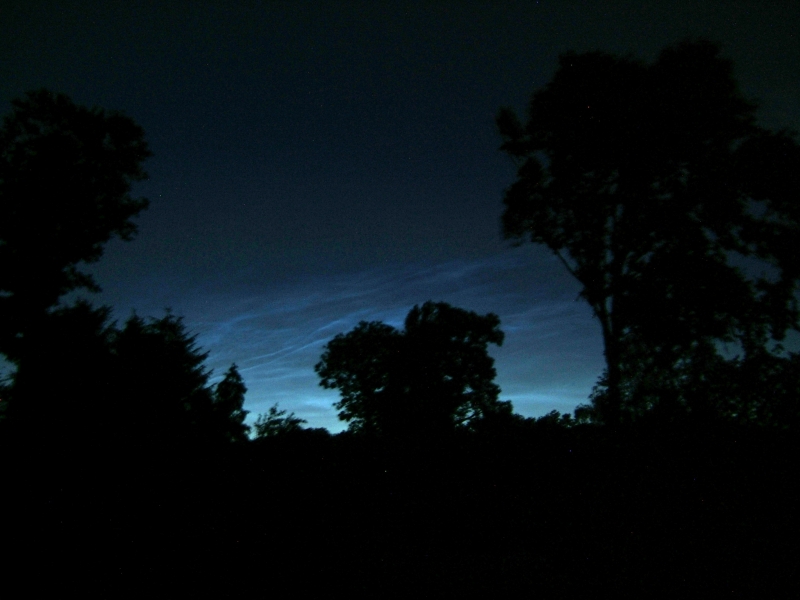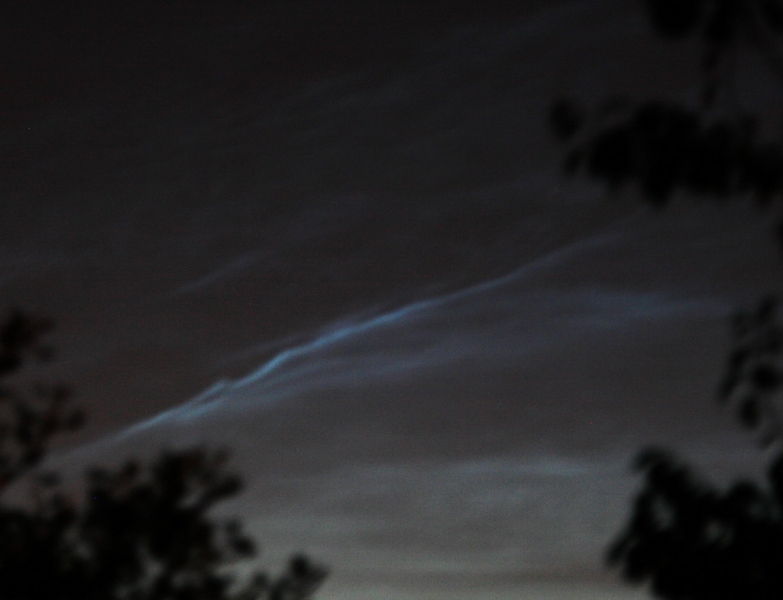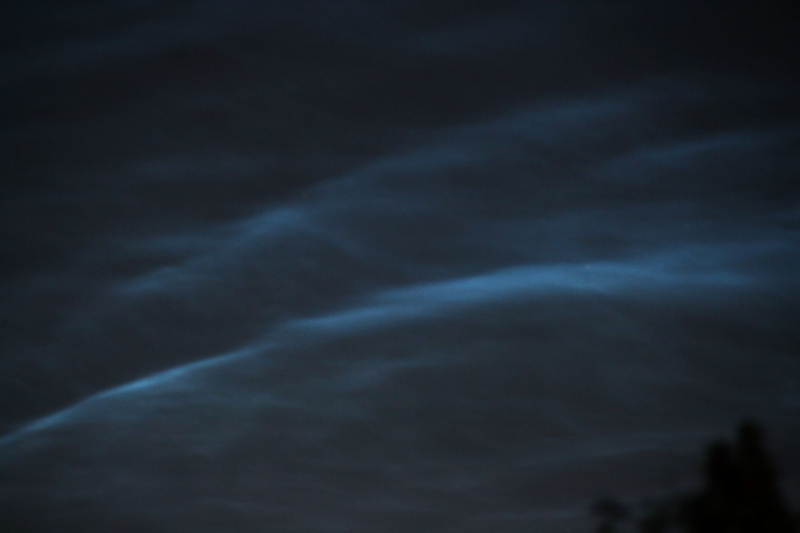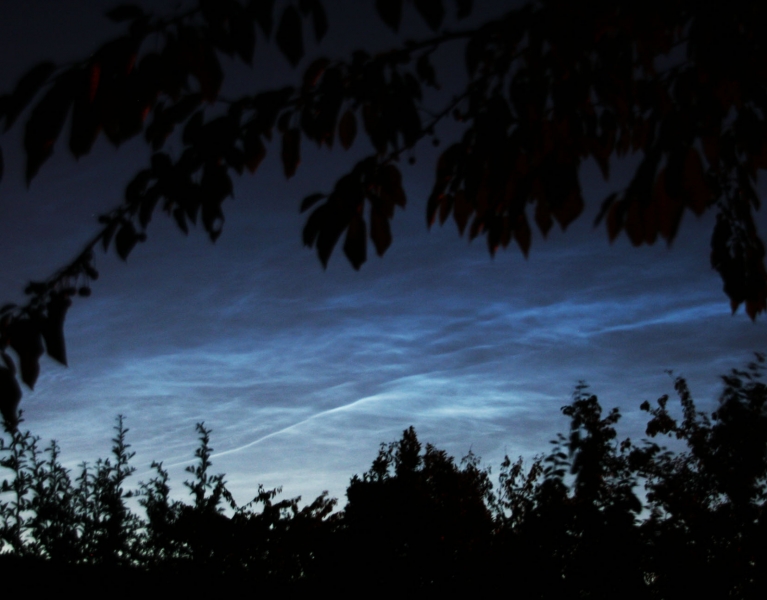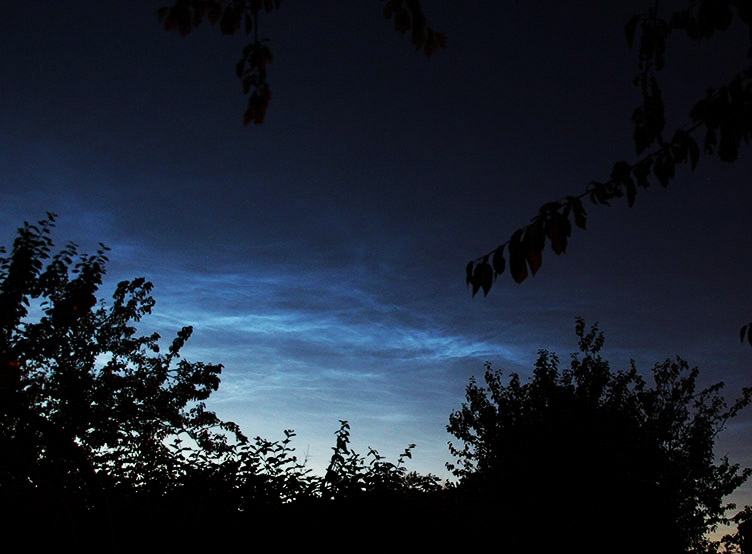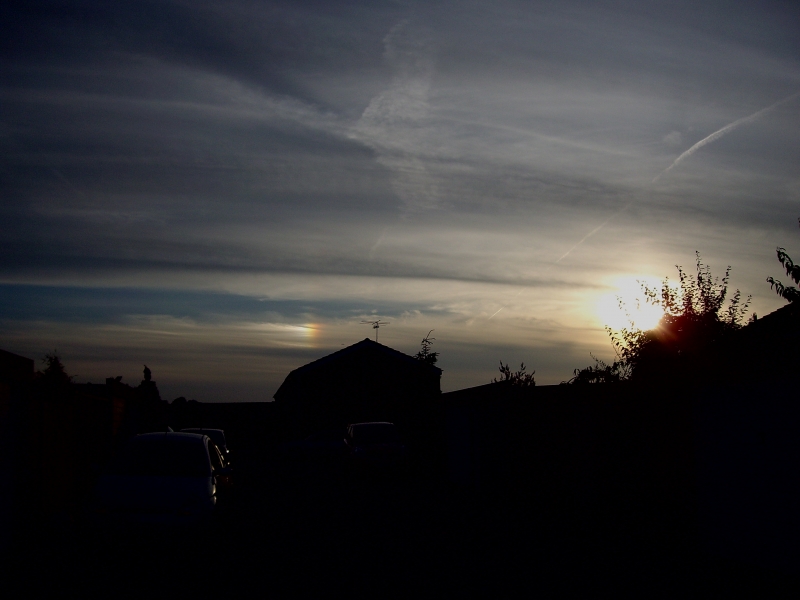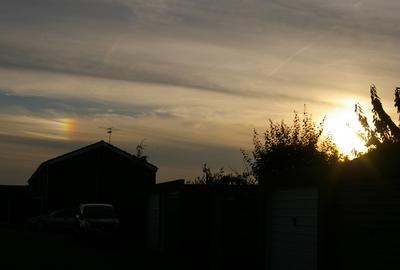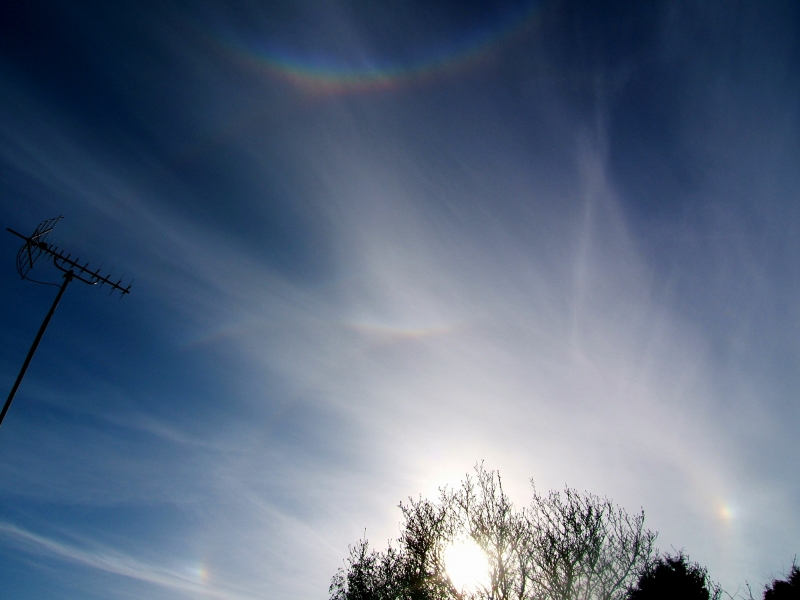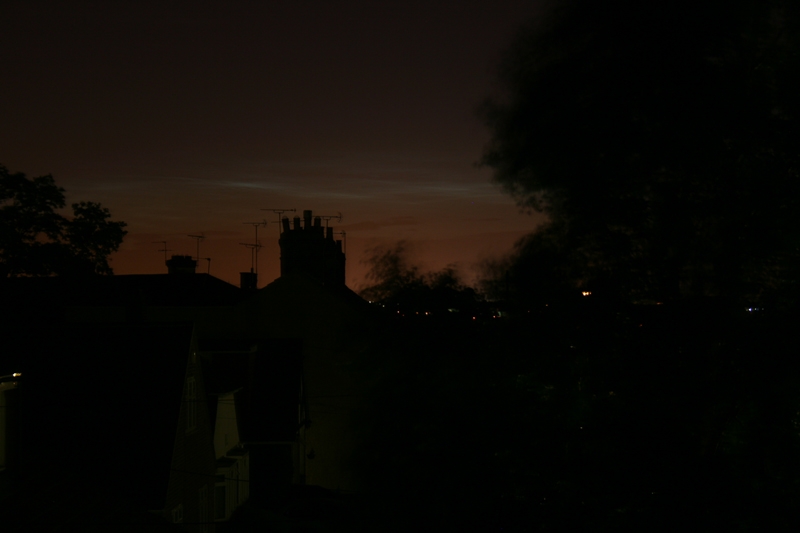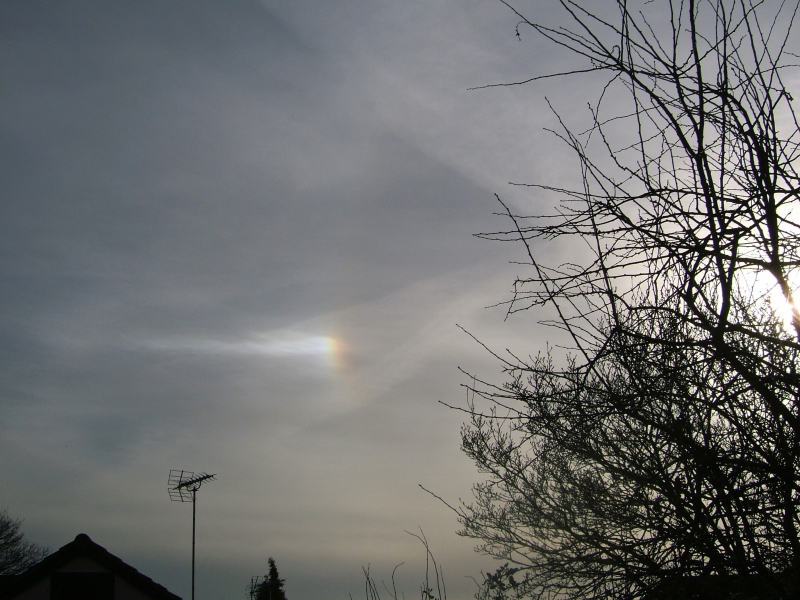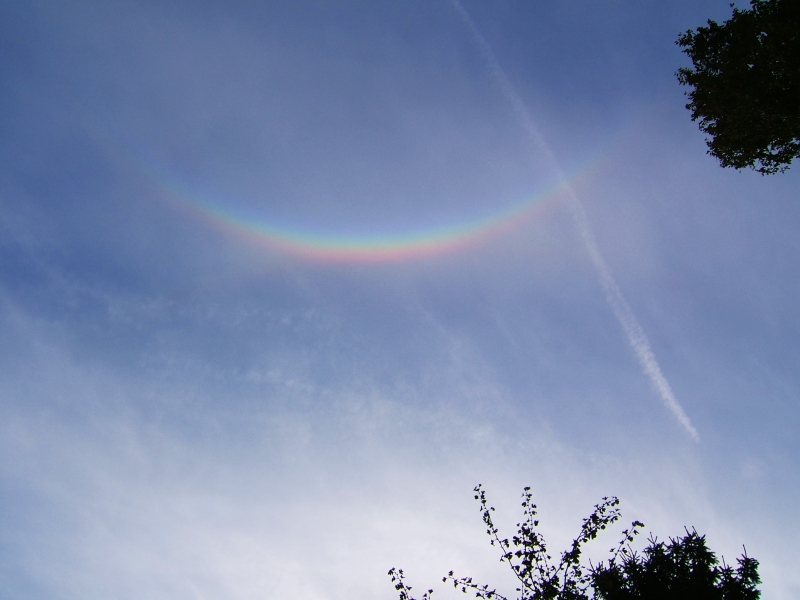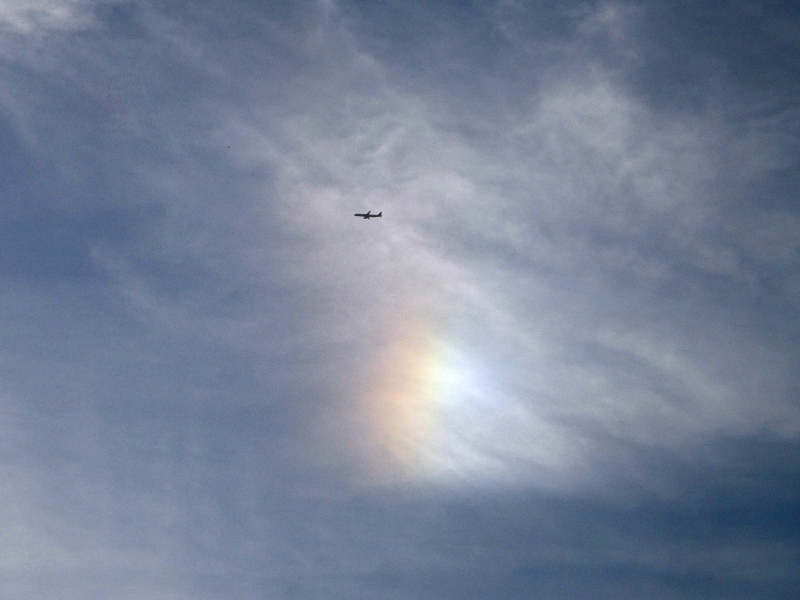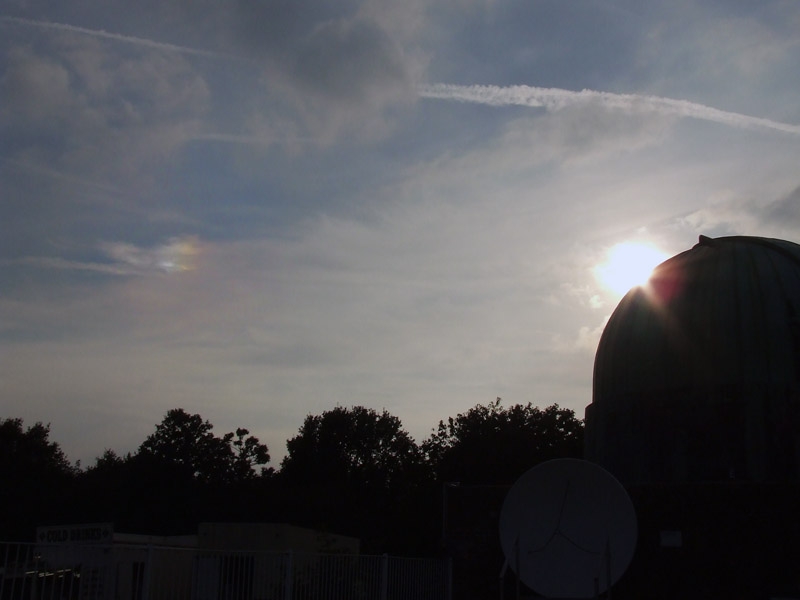Noctilucent Cloud (NLC) sightings – July 2024
A lovely selection of NLC images taken by Society members on the 7th & 14th of July 2024.
7th July 2024
Honor Wheeler – Dartford.

A panoramic photo by Honor Wheeler comprising 5 individual images.
The bright star like object on the right hand side, middle is Jupiter, diagonally up, top and right is Mars and in-between at the top of the image you can just make out the Pleiades. Taken using a Canon Camera M6II on a tripod, ISO800, f/4.5, 1/2sec, 18-400mm lens set to 37mm. 02:18UTC

Jim Burchell – Dartford.


Bob Byrne – Dartford.

Sonia Rubie – Bexley.
Taken using an iPhone – point & shoot.


14th July 2024
Jim Burchell – Dartford.


Honor Wheeler – Dartford.
This is 6 frame panoramic taken at 21:45UTC.
Taken using a Canon Camera M6II, Tamron 18-400mm lens, ISO800, f/4, 1/1sec. Each frame the lens was set to 27mm. Panoramic created in Bimostitch and processed in Snapseed.

Martin Crow – Burnham on Crouch, Essex.

Time Lapse video by Martin Crow

Sonia Rubie – Bexley.
Taken using an iPhone – point & shoot.

Noctilucent Cloud (NLC) sightings – June 2024
It is Noctilucent Cloud (NLC) season and members have been watching the sky to see if these elusive clouds put in an appearance – and I am pleased to report that they have. A few members have spotted them….
First this season was by Honor Wheeler whilst in Norfolk on the 17th June 2024.


Second was by Jim Burchell on the 18th June 2024 from Dartford.



Third was by Jim Burchell & Sonia Rubie on the 20th June 2024.
NLC spotted by Jim on the 20th June 2024 from Dartford.




NLC spotted by Sonia Rubie on the 20th June 2024 from Bexley.


And finally, fourth by Martin Crow on 23rd June 2024 from Burnham-on-Crouch, Essex.

Double Rainbow
A fantastic image of a double rainbow captured by member Kevin Smith whilst on a walk in Deal, Kent on the 16th April 2024.
At 6.35pm Kevin was walking along the marshes to the West of Deal looking East towards the sea, about 700 metres from the beach when he saw the rainbow and used his Samsung A52s mobile phone to take the photo.
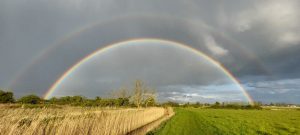
”A double rainbow is a wonderful sight where you get two spectacular natural displays for the price of one.
Surprisingly, this phenomenon is actually relatively common, especially at times when the sun is low in the sky such as in the early morning or late afternoon. The second rainbow is fainter and more ‘pastel’ in tone than the primary rainbow because more light escapes from two reflections compared to one.
The secondary rainbow is also dispersed over a wider area of the sky. It is nearly twice as wide as the primary bow.
A key feature of double rainbows is that the colour sequence in the second rainbow is reversed.
The dark band between the two rainbows is known as Alexander’s band, after Alexander of Aphrodisias who first described it in 200AD.
The band forms because between the deviation angles of the primary and secondary rainbows none of the sunlight is scattered by the raindrops towards the observer giving the band of dark sky.
How are double rainbows formed?
Double rainbows are formed when sunlight is reflected twice within a raindrop with the violet light that reaches the observer’s eye coming from the higher raindrops and the red light from lower raindrops.
This means the sequence of colours is inverted compared to the primary rainbow, with the secondary bow appearing about 10 degrees above the primary bow.” Ref:https://www.metoffice.gov.uk/weather/learn-about/weather/optical-effects/rainbows/double-rainbows
Stunning Solar Halo by Honor Wheeler
NEVER LOOK AT THE SUN DIRECTLY. Please click here for solar observing safely.
Two stunning Solar Halo images taken by member Honor Wheeler on the 14th April 2024 from Winchester.
Honor captured the Solar Halo’s using a Canon M6II fitted with a Samyang 8mm fisheye lens, ISO100, 1/2500’s & 1/3200’s.
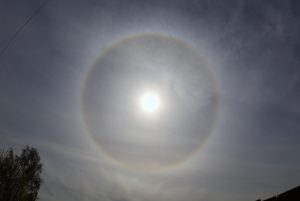
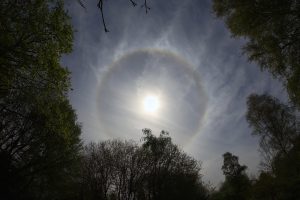
For more information about Solar Halo’s and how they are formed check out https://atoptics.co.uk/blog/atmospheric-halos/.
Sundogs & 22-degree Halo by Jim Burchell
Fine examples of sundogs and part of a 22-degree halo captured by member Jim Buchell on the 25th September 2023 from Dartford.
”A sundog, also known as sun dog, mock sun or parhelion, consists of glowing spots around the sun. They are created by sunlight refracting off plate-shaped ice crystals in the cirrus clouds. Sundogs are some of the most frequently observed atmospheric optical phenomena and can be observed throughout the year and anywhere in the world. They are also associated with 22-degree halos.
Sundogs tend to be most visible when the Sun is close to the horizon. The part of a sundog closest to the Sun tends to be red in colour, while the areas further away from the Sun generally appear blue or green.” Ref:https://www.timeanddate.com/astronomy/optical-phenomenon.html
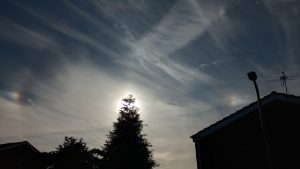
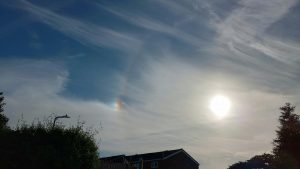
For more information about sundogs and 22-degree halo’s check out https://atoptics.co.uk/blog/sundogs-sun-dogs-parhelia-mock-suns/ and https://atoptics.co.uk/blog/22-halo-formation/
Superb Sun Pillar imaged by John Archer
Whilst travelling early morning on a train to London, CMHASD Chairman John Archer saw this fine example of a sun pillar on the 23rd October 2023.
”Sun pillars and light pillars are beams of light that extend vertically upward (or downward) from a bright light source, such as the sun or another bright light low on the horizon. They can be 5 to 10 degrees high and sometimes even higher. In fact, they might lengthen or brighten as you gaze at them. They’re beautiful and wondrous. And they’re also the source of some UFO reports!
When is the best time to see them?
You’ll most often see sun pillars when the sun is low in the western sky before sunset, or low in the east just after the breaking of dawn. However, you might even see a sun pillar when the sun is below the horizon. On the other hand, you can see light pillars at any time of night. They’re called sun pillars when the sun helps make them. But the moon or even streetlights can create this light phenomenon, too, in which case the name light pillar is more appropriate.” Ref:https://earthsky.org/earth/what-is-a-sun-pillar/
For more information about sun pillars see Les Cowley’s brilliant website Atmospheric Optics .
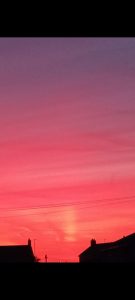
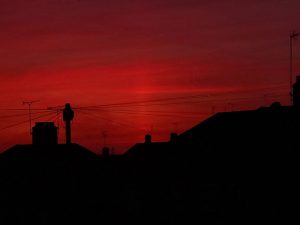
Crepuscular rays at the pavilion by Honor Wheeler
A lovely image taken by member Honor Wheeler on the 10th August 2023 whilst at the pavilion on an informal night of some crepuscular rays.
”Crepuscular rays are sunbeams that originate when the Sun is just above or below a layer of clouds, during the twilight period; which extend over the western sky radiating from the position of the Sun. Crepuscular comes from the Latin word crepusculum meaning “twilight”. Loosely, the term crepuscular rays is sometimes extended to the general phenomenon of rays of sunlight that appear to converge at a point in the sky, irrespective of time of day.” Ref: https://en.wikipedia.org/wiki/Crepuscular_rays
”The radiating appearance of the bands is caused by perspective, as demonstrated by the fact that when on rare occasions the rays extend across the entire sky, they appear to converge again on the eastern horizon. This rare related phenomena are called anticrepuscular rays and so appear at the same time (and coloration) as crepuscular rays but in the opposite direction of the setting sun (east rather than west).” Ref: https://www.britannica.com/science/crepuscular-ray
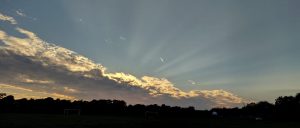
Noctilucent Cloud (NLC) – 5th July 2023
Noctilucent clouds put in a rare appearance on the 5th July 2023 from around 10.50pmish until 11.30pm and a few lucky CMHASD members got to see them 🙂
Below are the photos that members Jim Burchell, Diane Clarke, Martin Crow and Sonia took of the clouds.
Jim’s NLC images, taken with a Pentax KP.
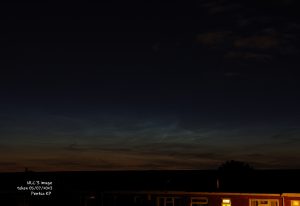
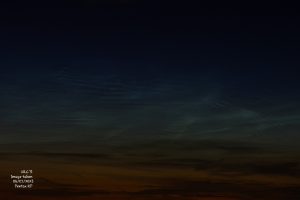
Diane’s NLC image, taken using a Canon M50 Mk2, lens Canon 100mm macro, f3.2 @ 2.5sec, ISO 400.

Martin’s NLC image, taken with an iPhone.
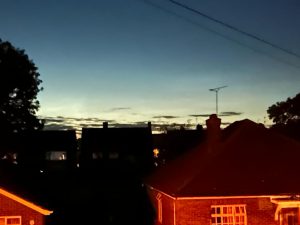
Sonia’s NLC images, taken with an iPhone.
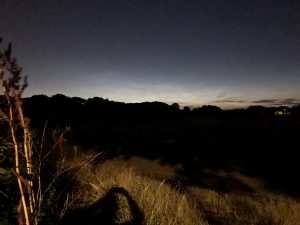
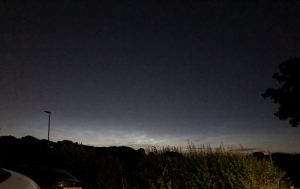
Noctilucent Cloud – 30th June 2023
Noctilucent cloud spotted on the 30th June 2023 around 3am BST by members Martin Crow and Sonia. Both photos taken using an iPhone.
Martin’s image taken from Essex
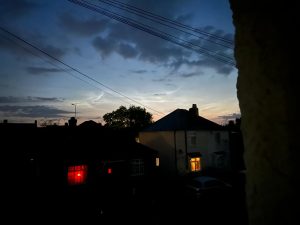
Sonia’s image taken from North Kent

Noctilucent Cloud – 25th June 2023
Rare Noctilucent Cloud spotted by CMHASD members Diane Clarke, Martin Crow and Sonia on the 25th June 2023.
First image below was taken by Diane using a Panasonic camera DMC-TZ100, f2.8 @ 1/10sec and ISO 6400 at 11.22pm BST.
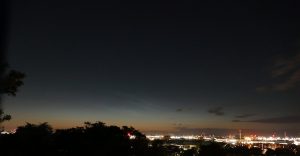
The next two images were taken by Sonia using an iPhone 8 at 11.04pm and 11.14pm BST.
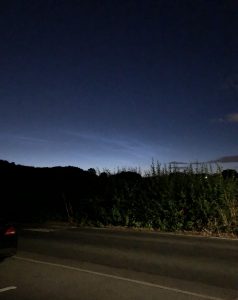
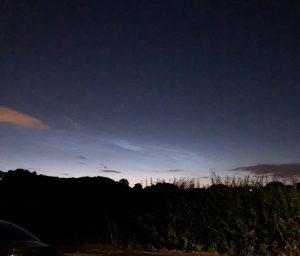
The next image was taken by Martin Crow using an iPhone.
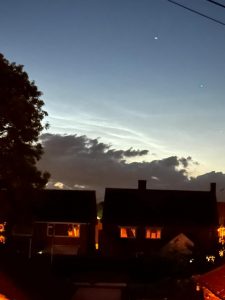
Slideshow
Other Images
Sun | Comets | Mercury | Venus | Atmospheric Optics | Meteors | Auroa and NLC | Moon | Minor Planets | Mars | Jupiter | Saturn | Uranus | Neptune | Messier | Caldwell | All Deep Sky | Conjunctions | Transits | Solar Eclipse | Lunar Eclipse | Wide Field |ISS & Space Junk | Exo-Planets
All images are copyright. Permission must be sought to from the image owner to the use of any of these images.












